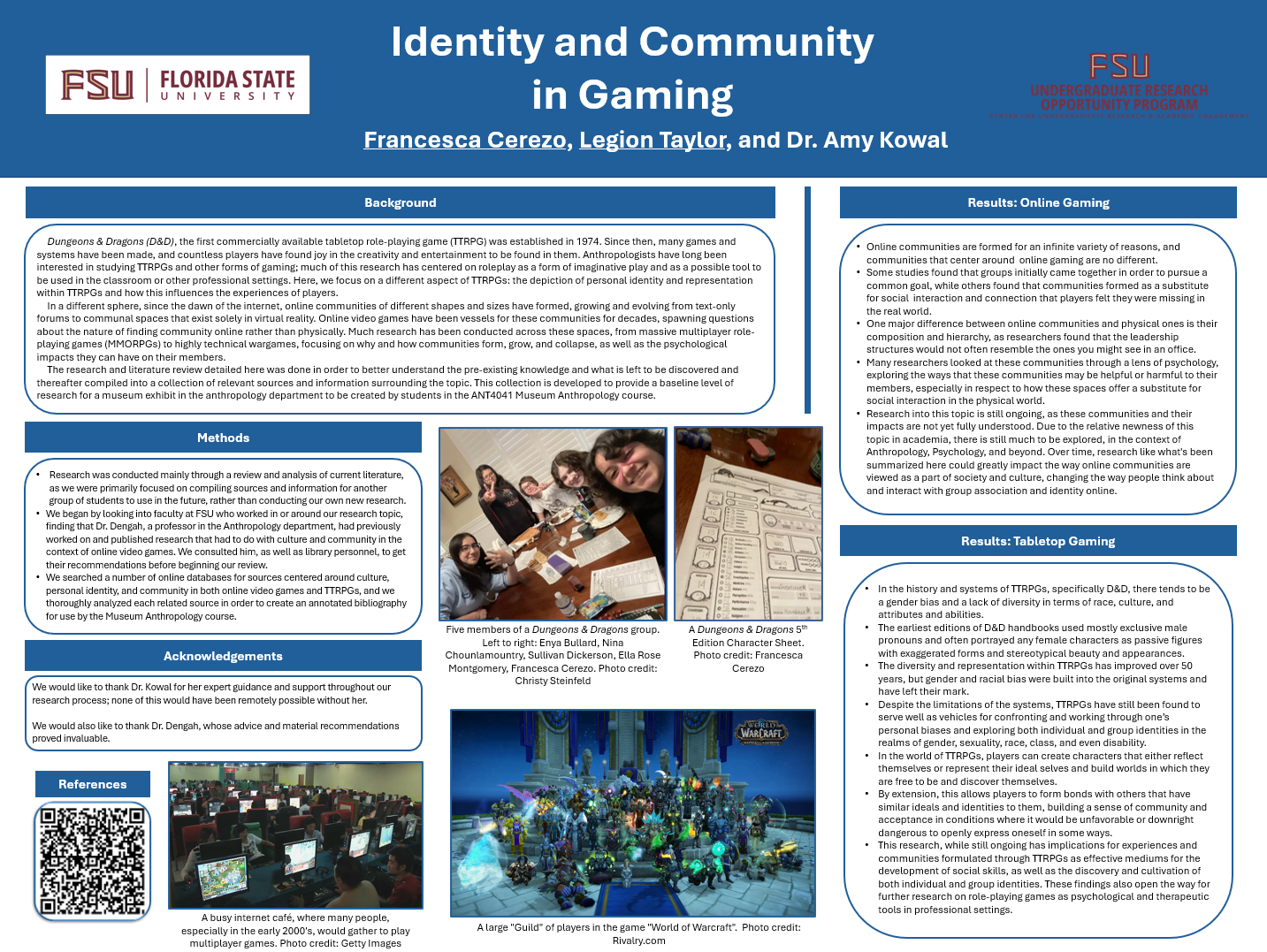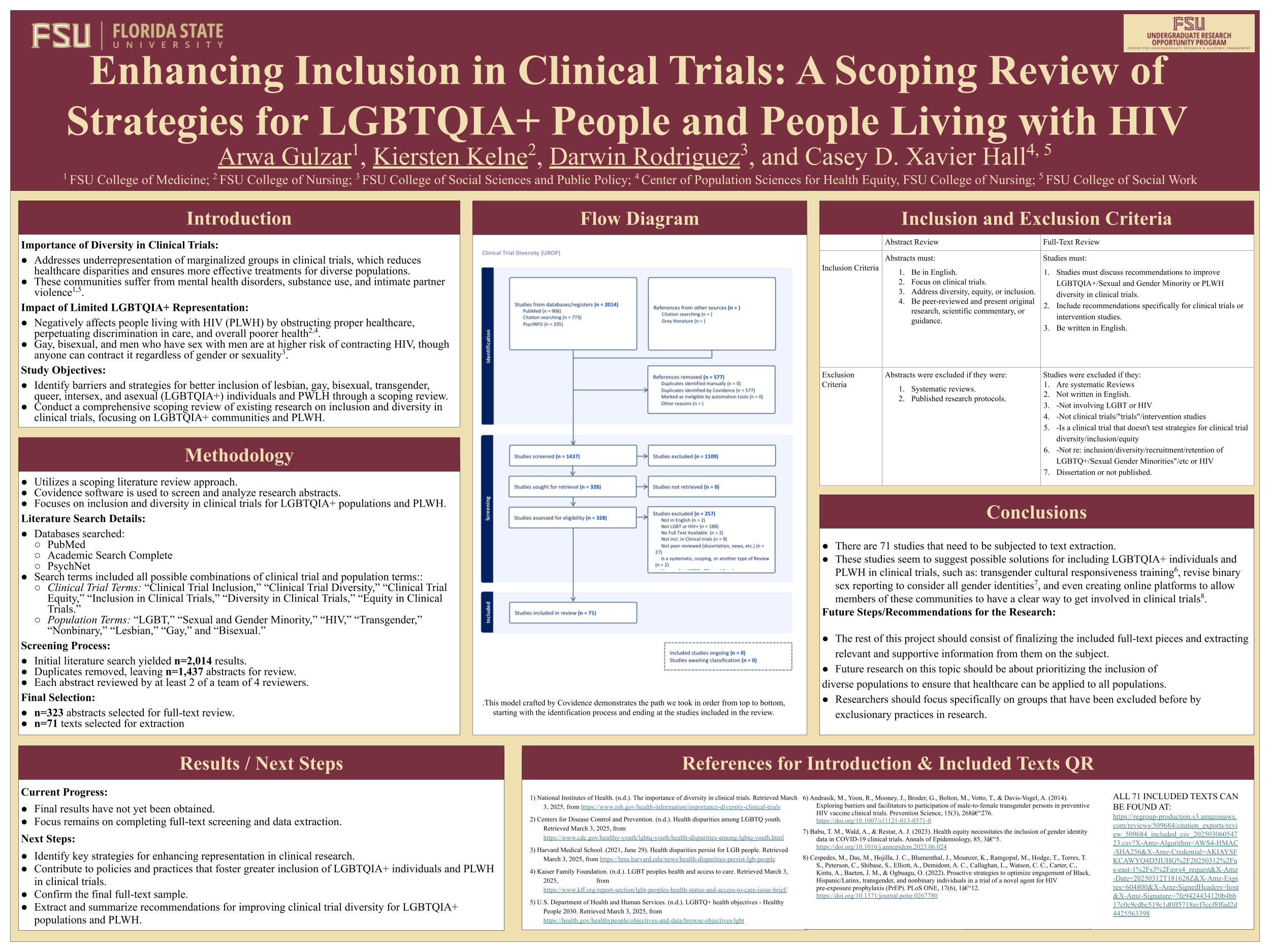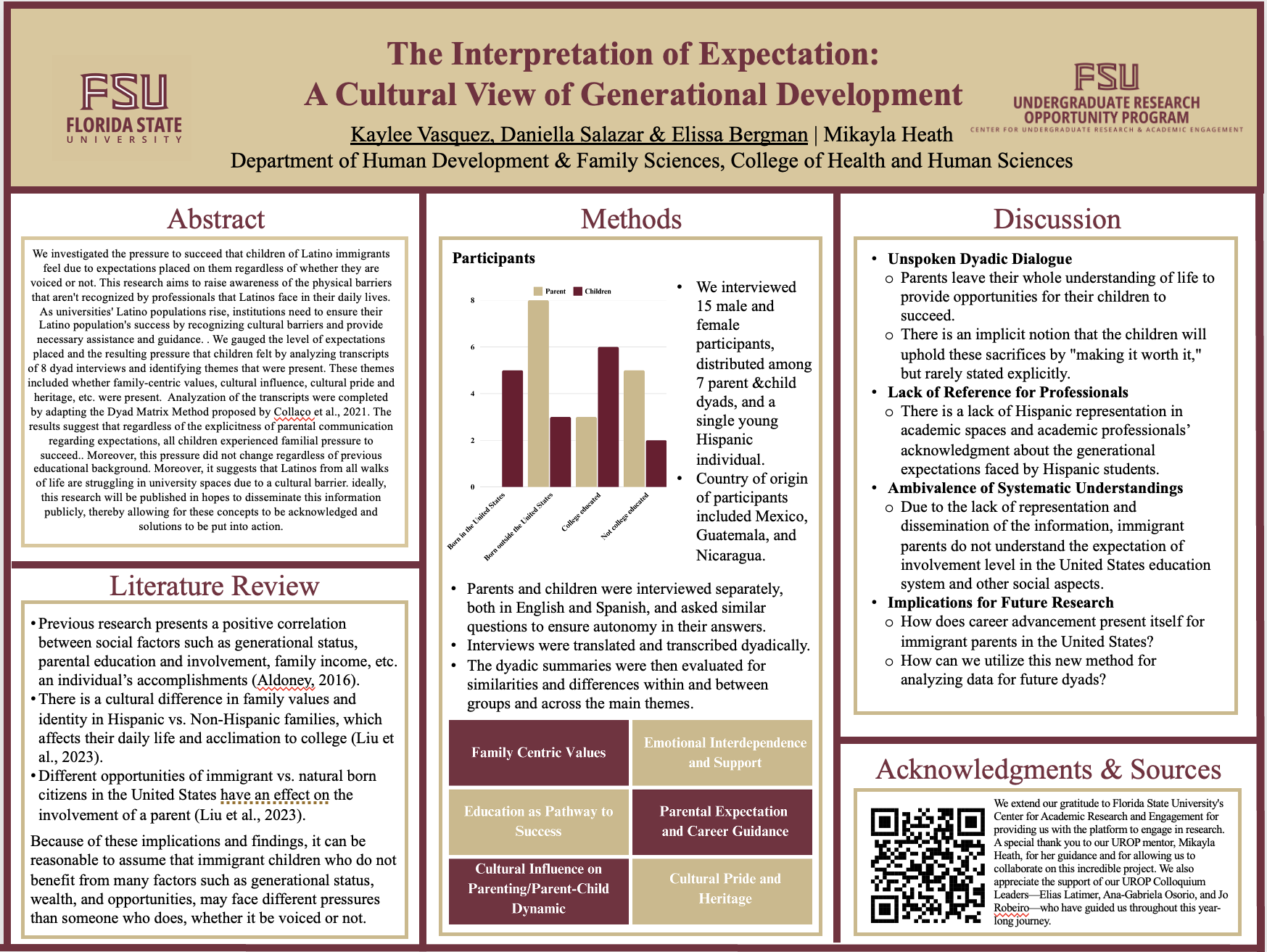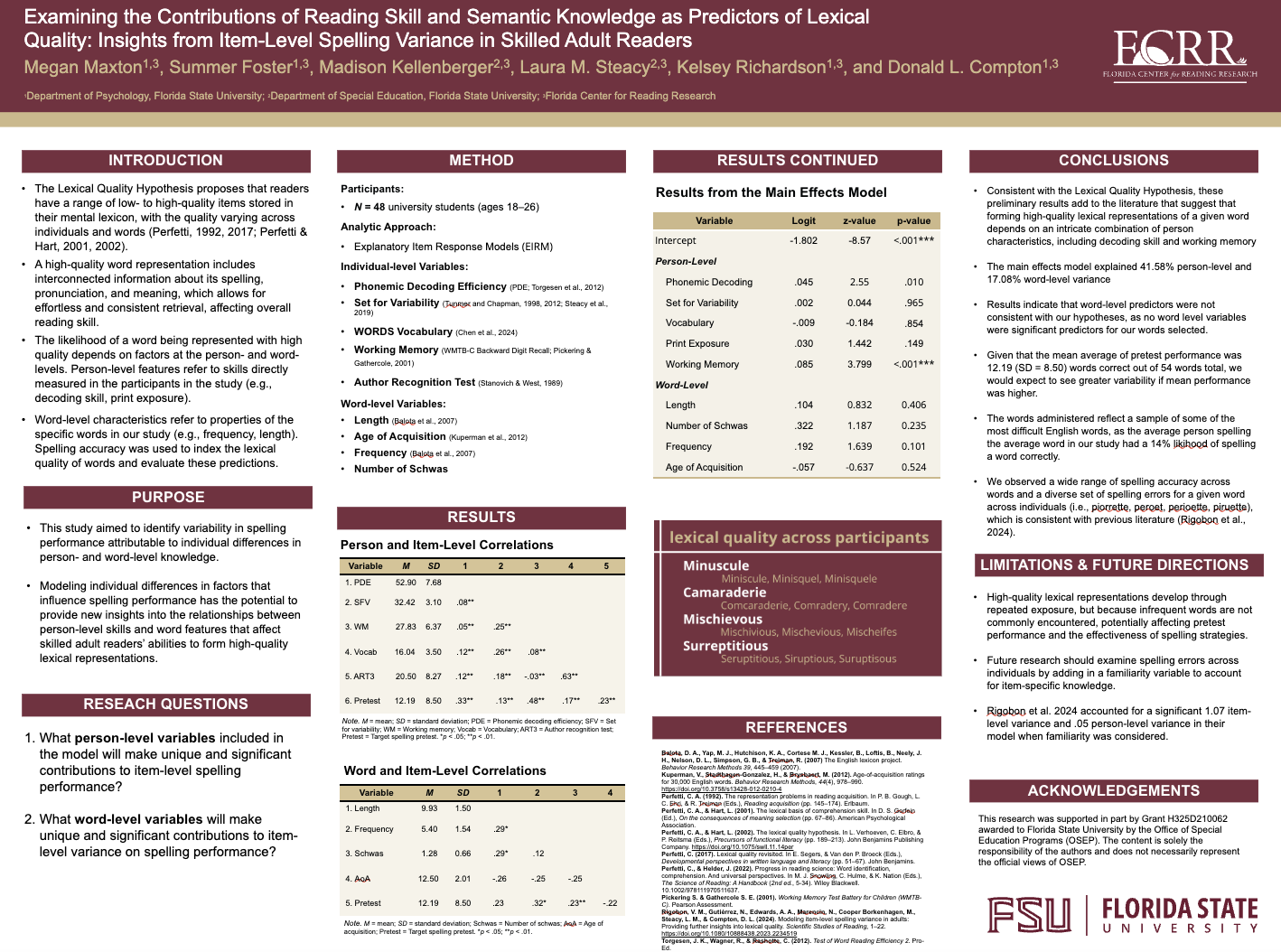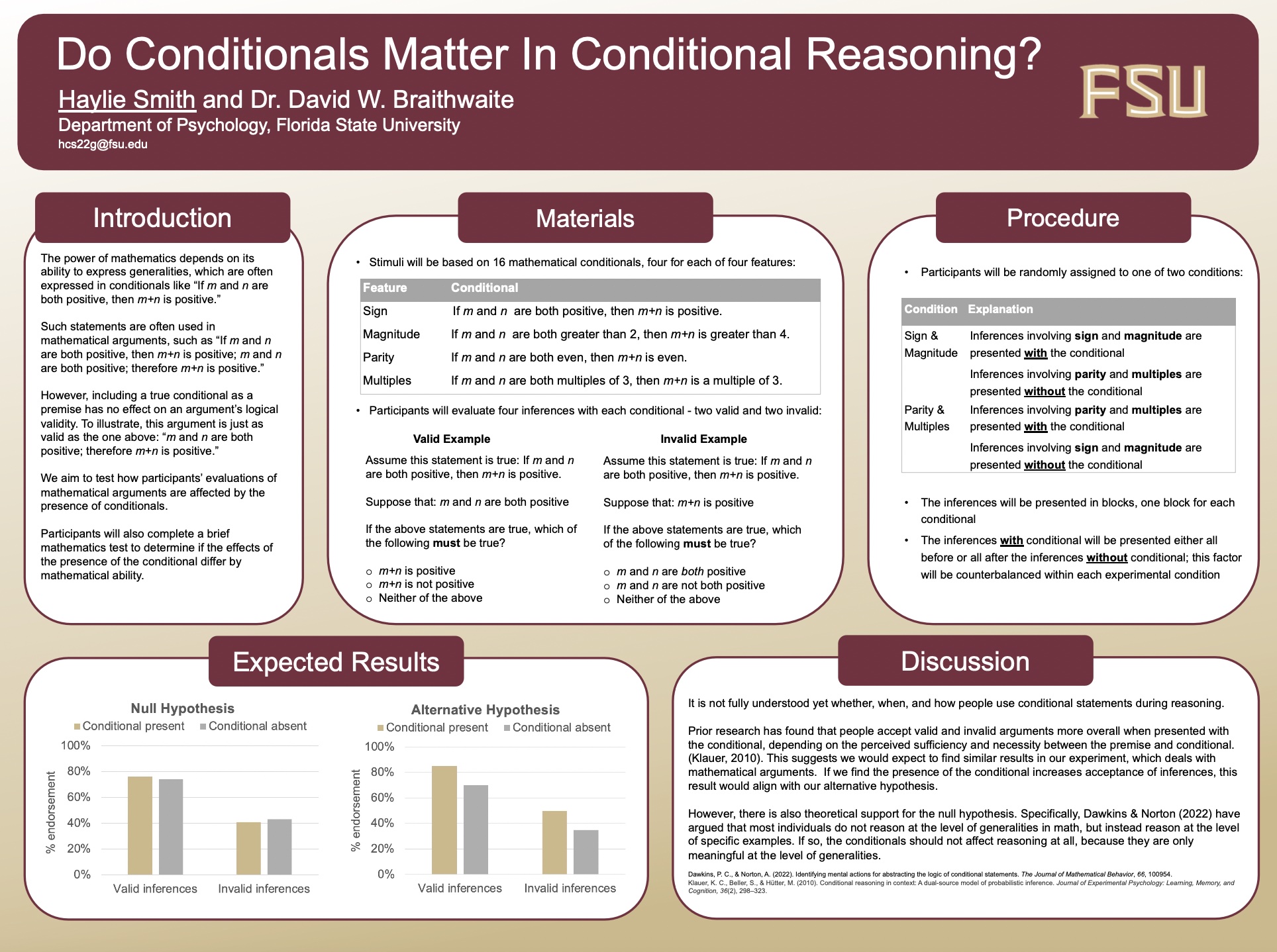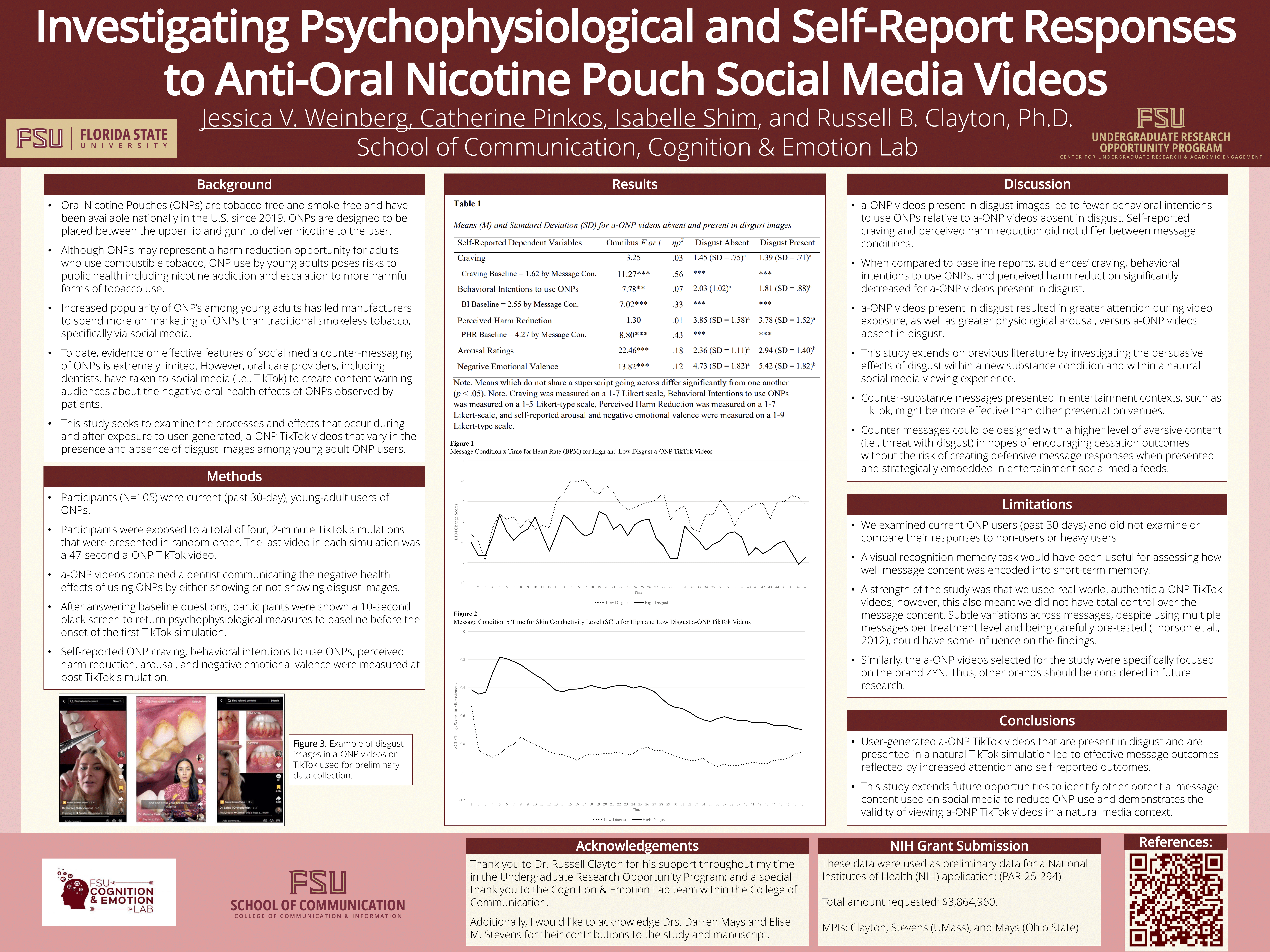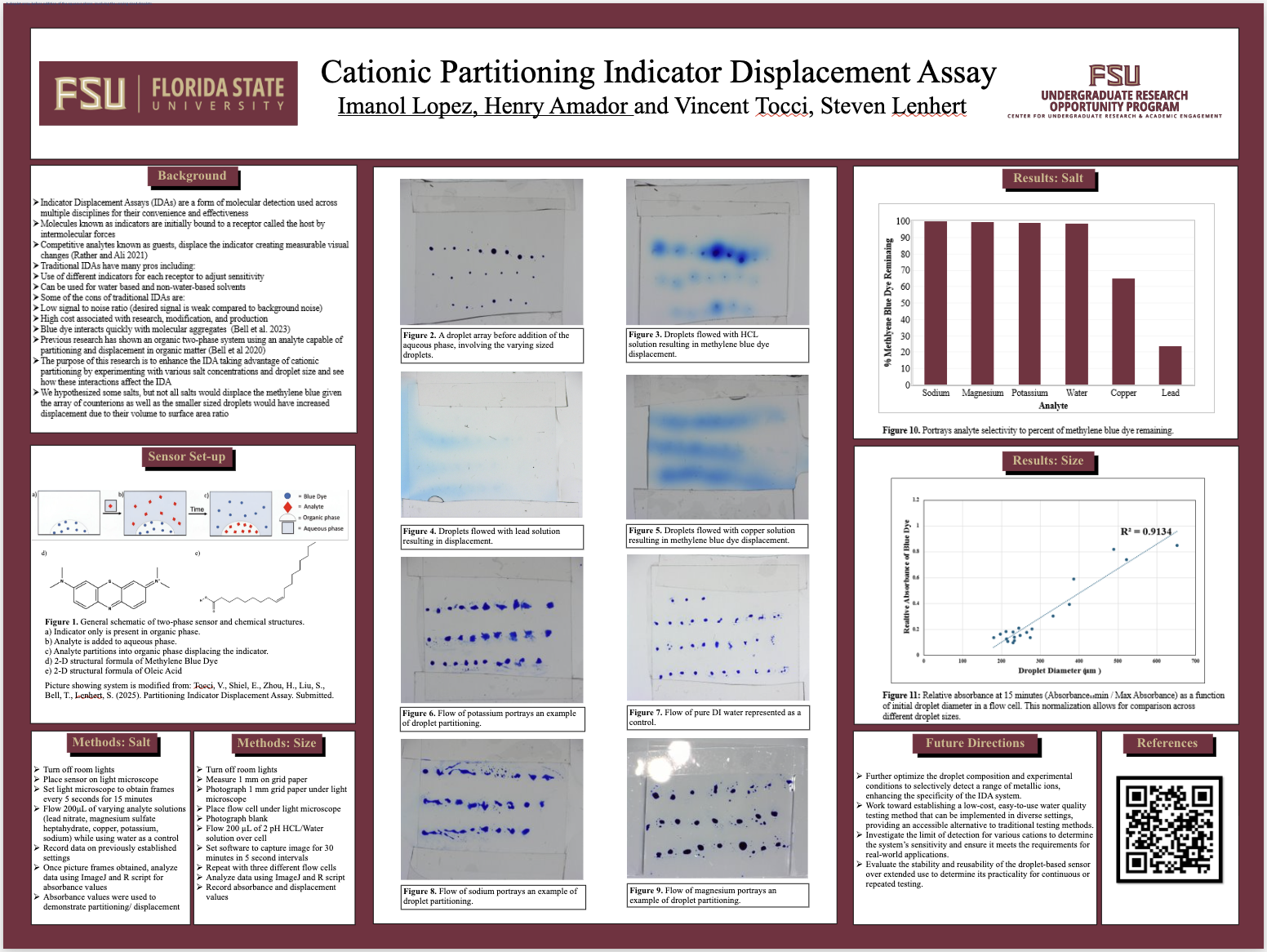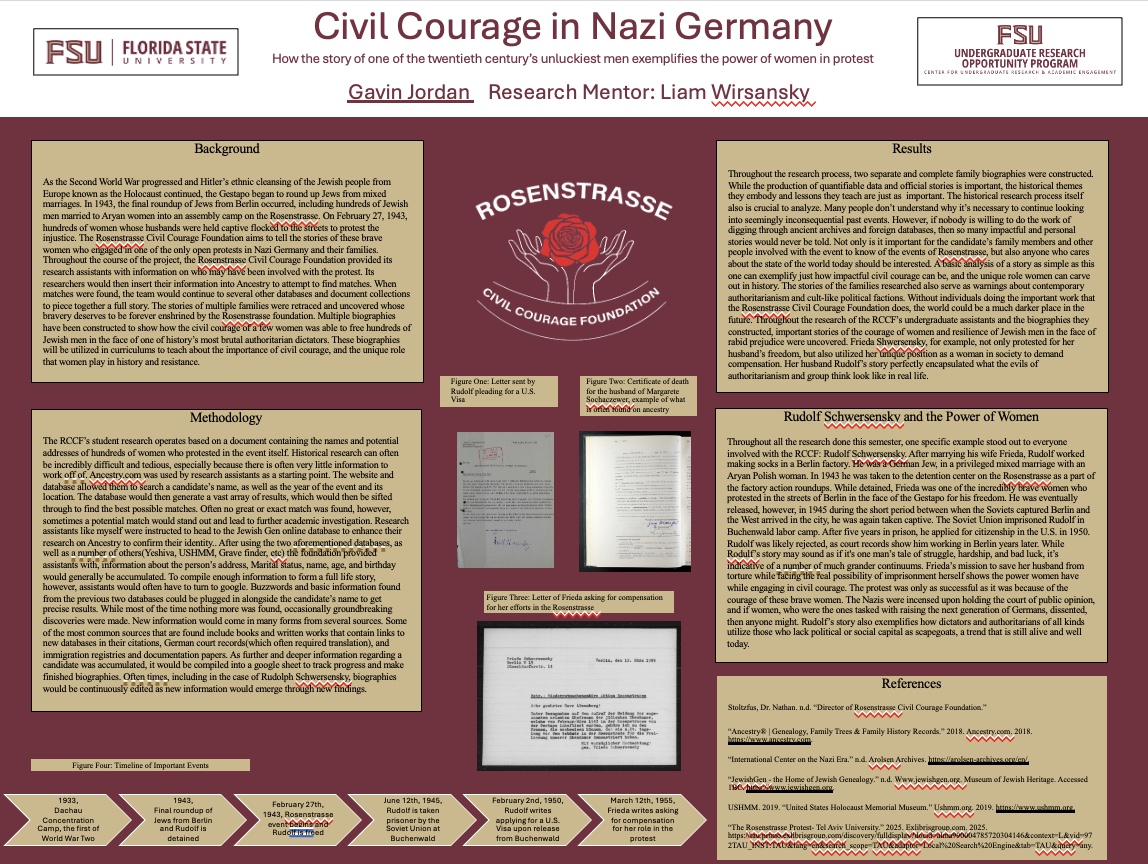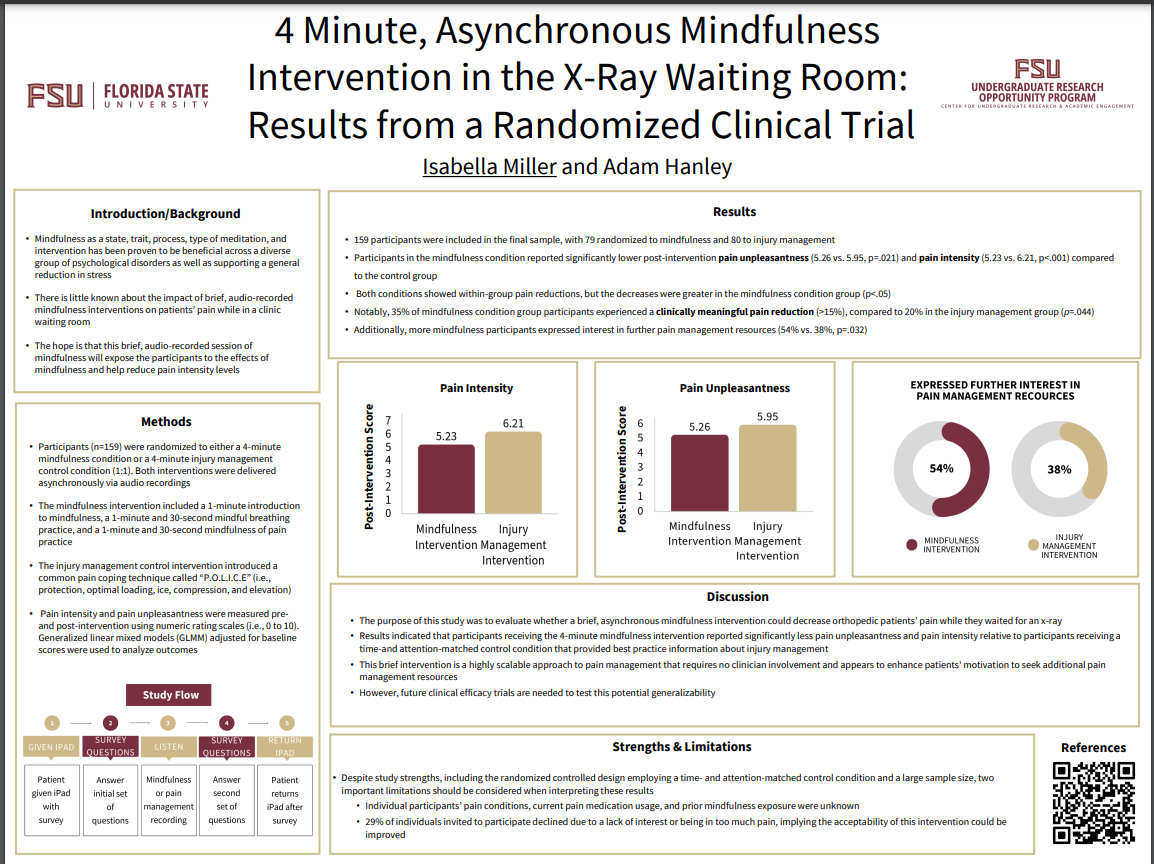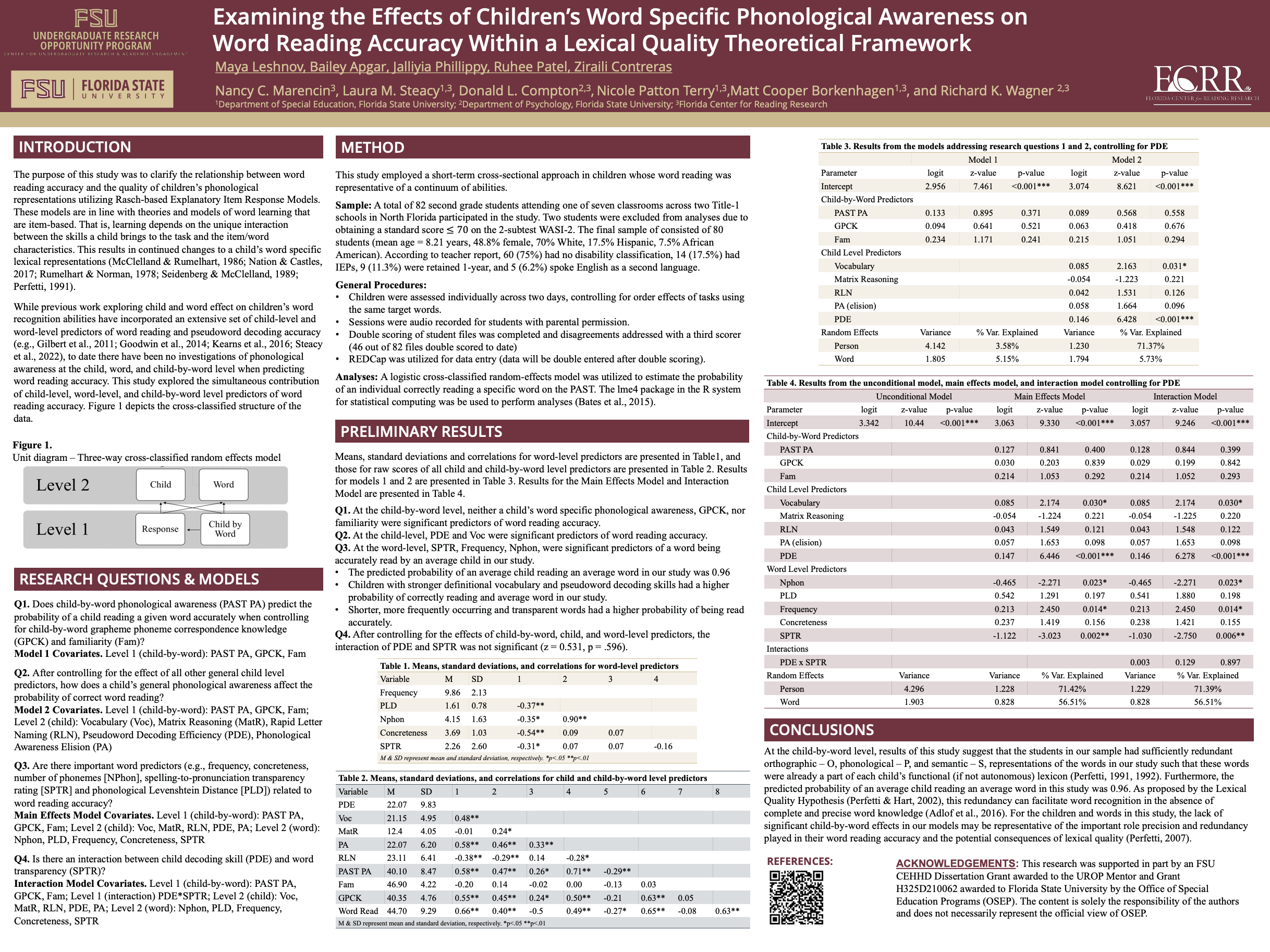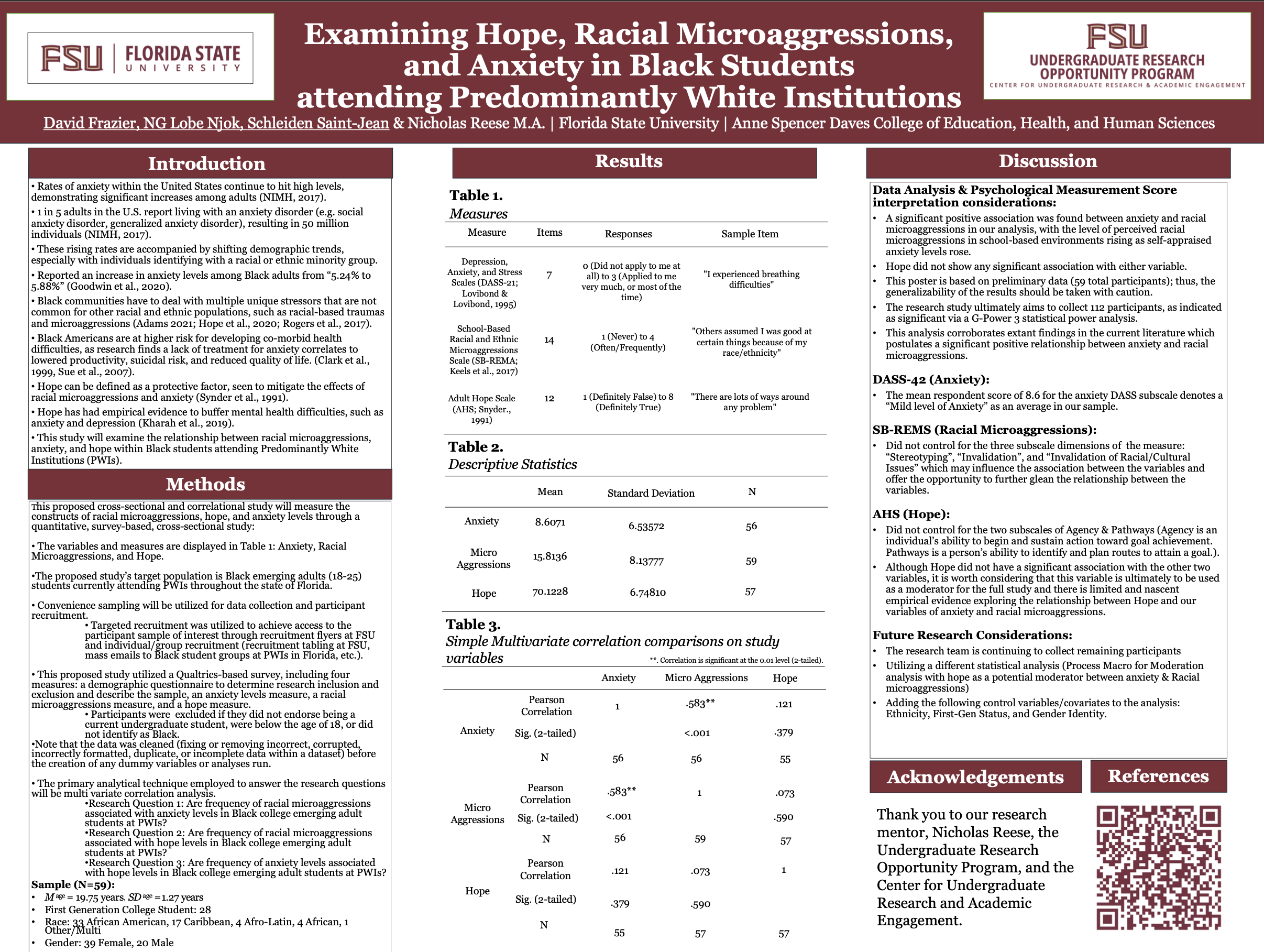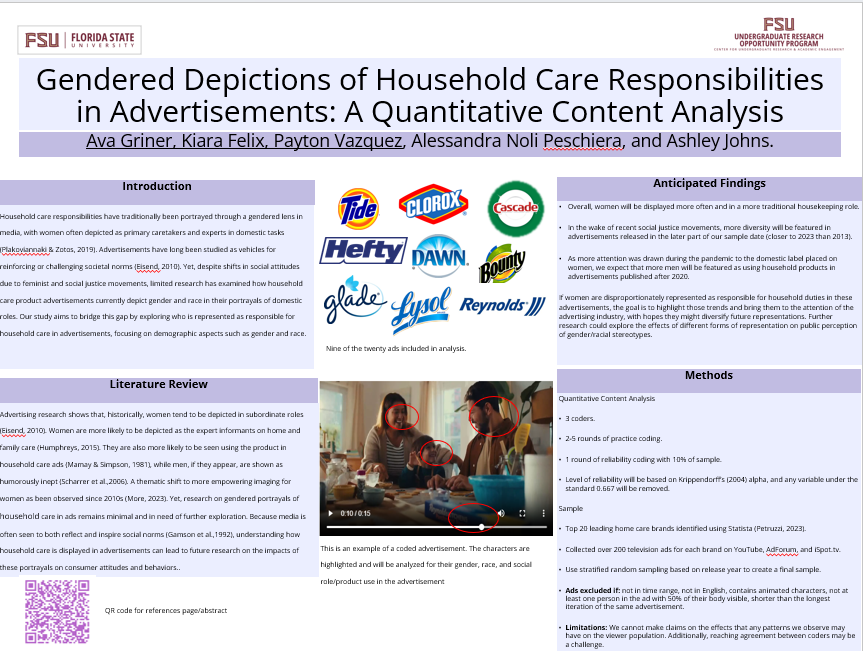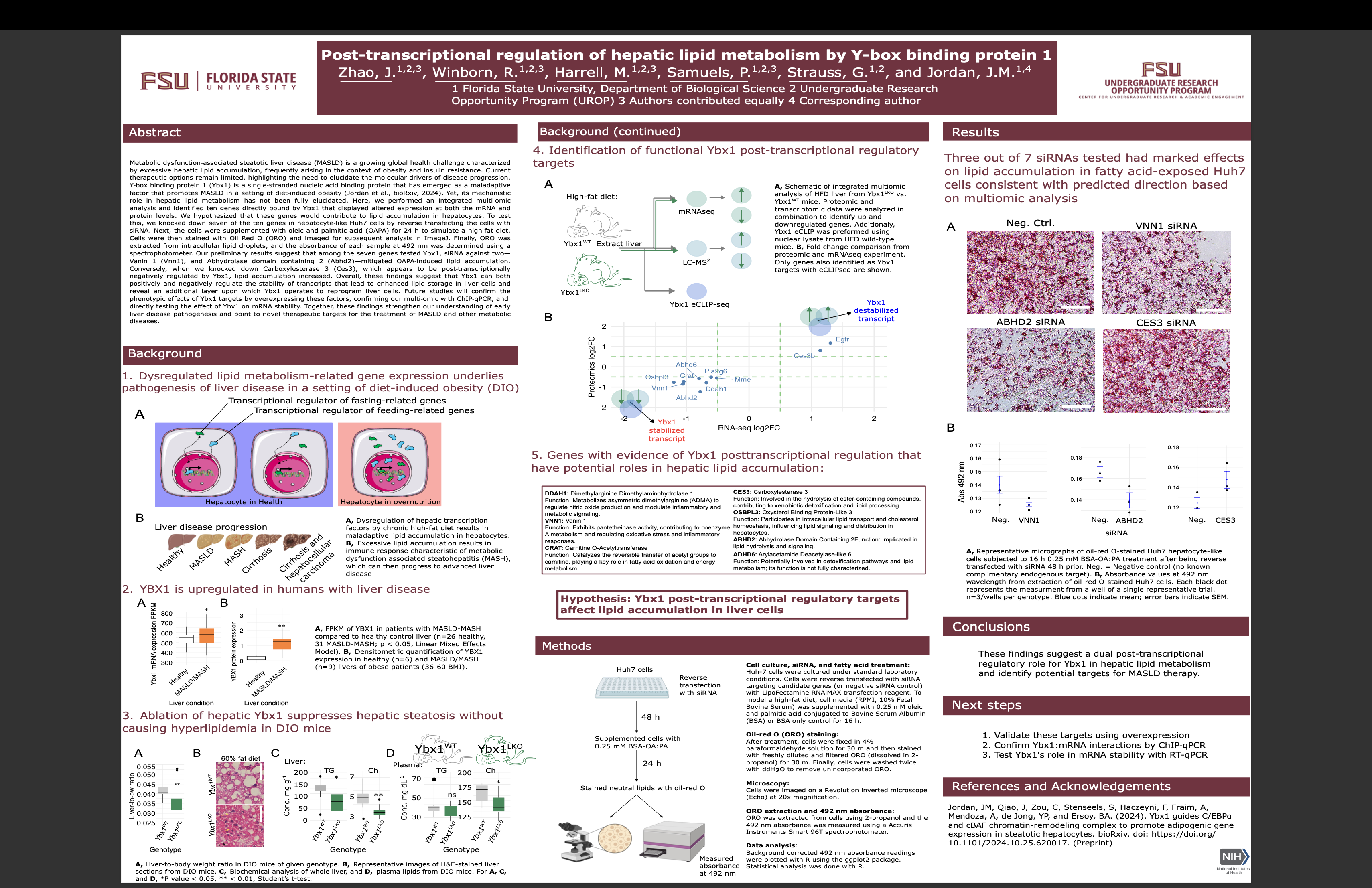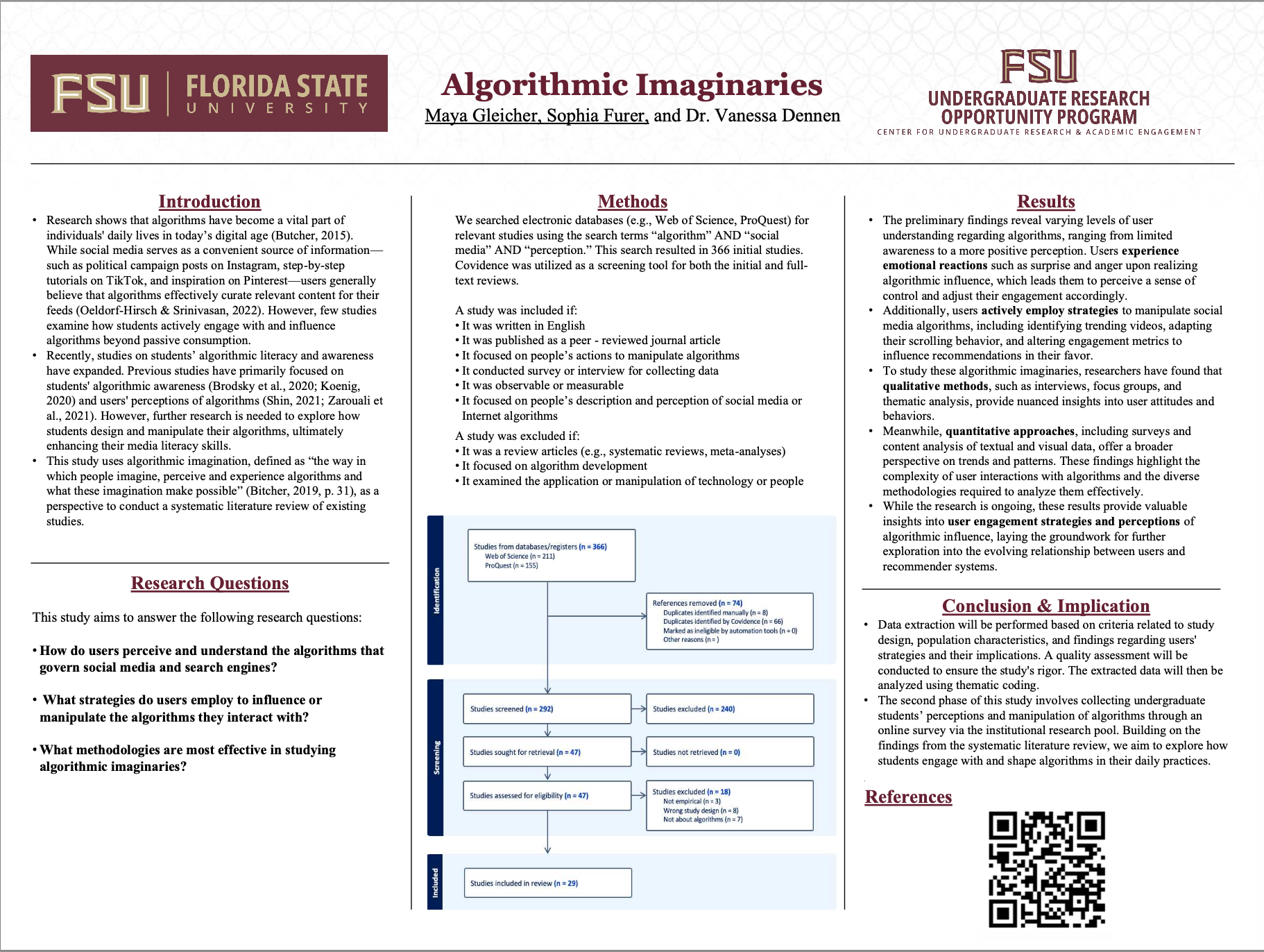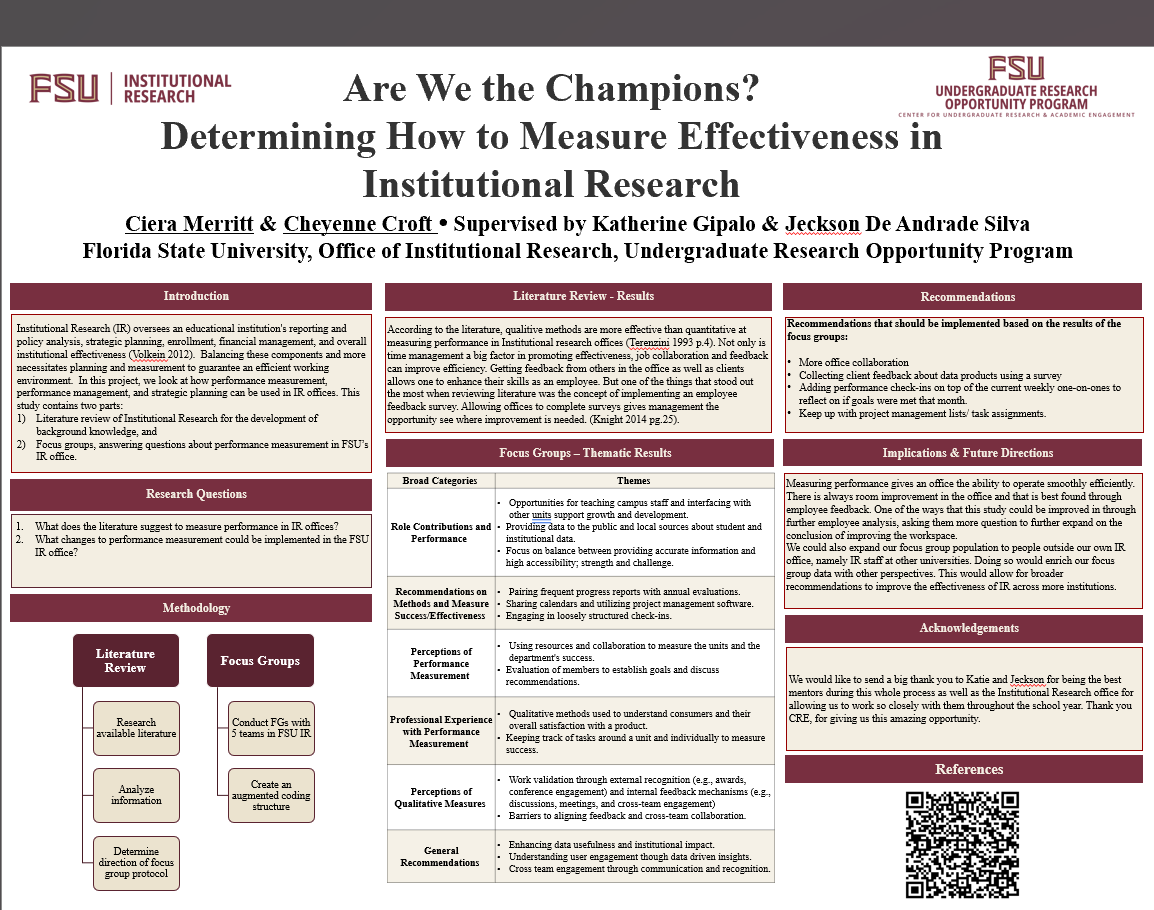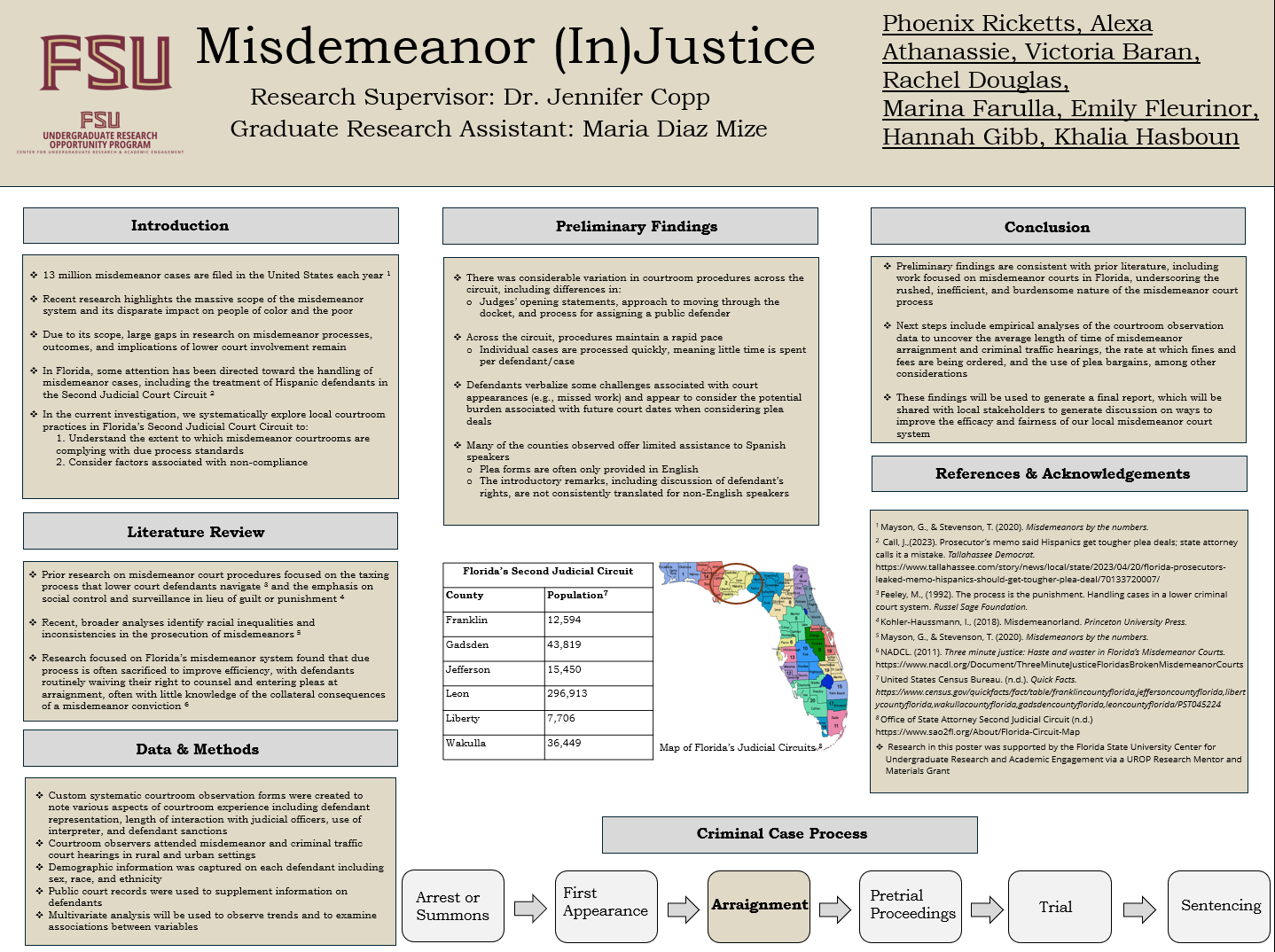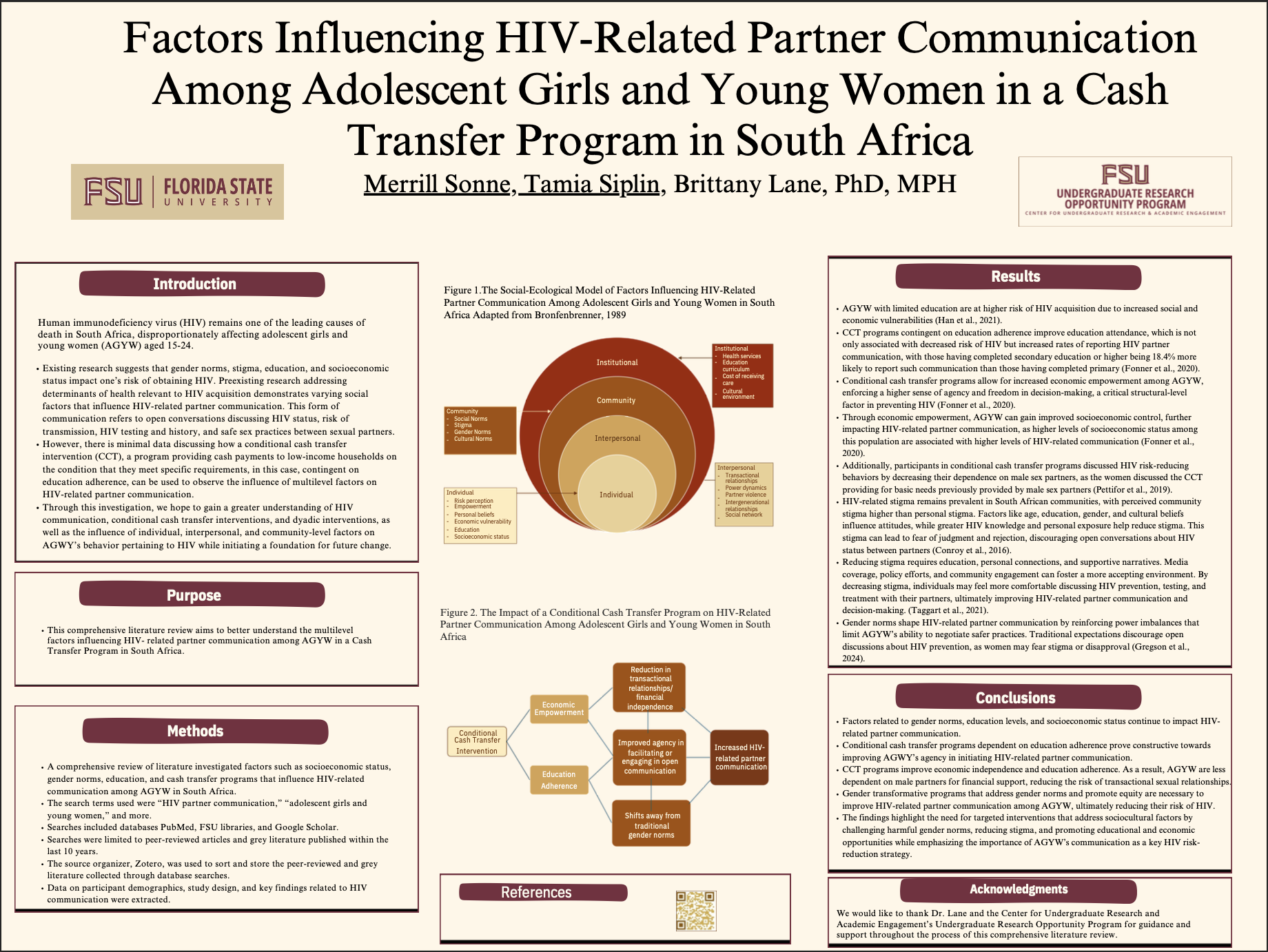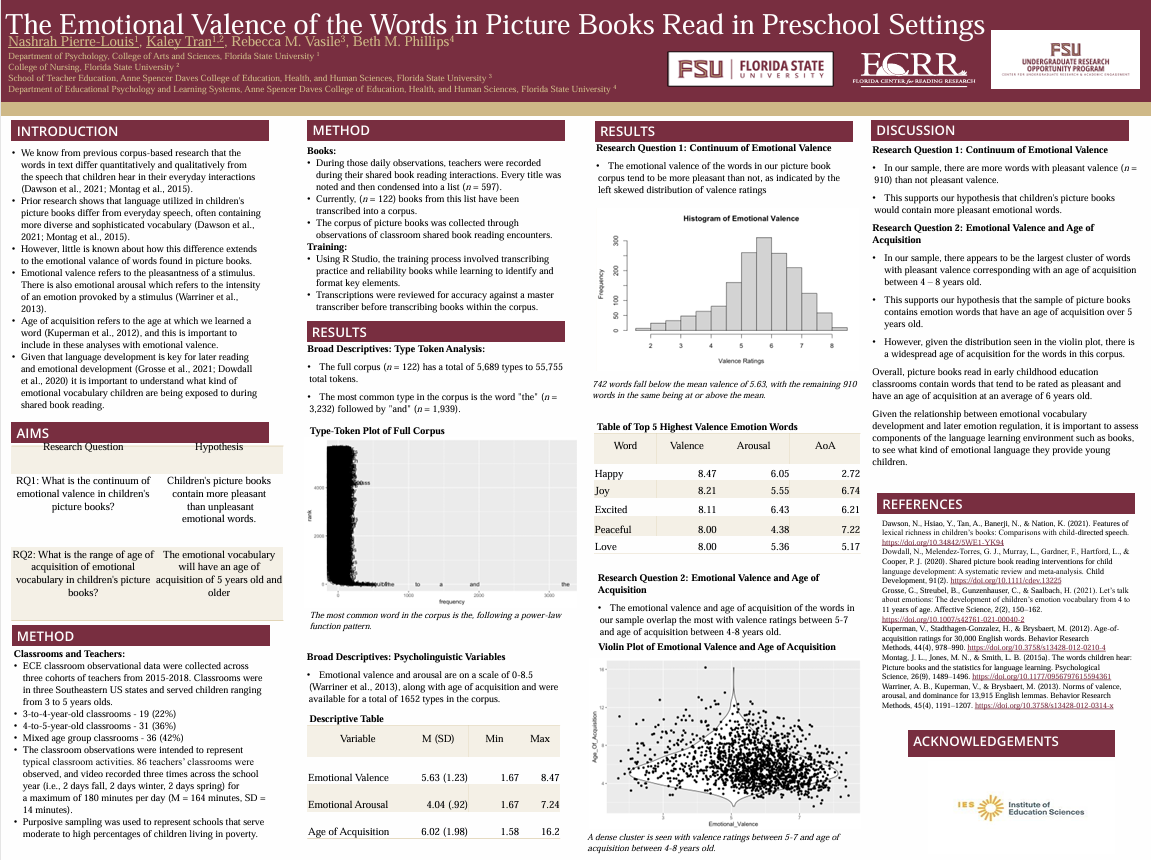Research Symposium
25th annual Undergraduate Research Symposium, April 1, 2025
Francesca Cerezo Poster Session 1: 9:30 am - 10:30 am / Poster #100

BIO
Francesca Cerezo is a second-year Classical Civilizations major with a minor in Anthropology and is currently a UROP Research Assistant. She is a member of the Eta Sigma Phi National Classics Honors Society, as well as the Hispanic/Latinx Student Union and Pride Student Union at Florida State. She is interested in classical and ancient language, literature, archaeology, and other culture, and cultural anthropology, and plans to pursue a graduate degree in the field of classics.
Identity and Community in Gaming
Authors: Francesca Cerezo, Dr. Amy KowalStudent Major: Classical Civilizations
Mentor: Dr. Amy Kowal
Mentor's Department: Department of Anthropology Mentor's College: College of Arts and Sciences Co-Presenters: Legion Taylor
Abstract
In today’s world, gaming, both online and physical, is a prevalent activity. Tabletop role-playing games (TTRPGs) have been present in the United States for the last 50 years, while online communities have offered an alternative to physical communities for much of the 21st Century. In this project, we studied research done by anthropologists and other professionals to discern how TTRPGs can serve as mediums for self-exploration and expression, and what makes online communities different from physical ones. This research was conducted through a review of available peer-reviewed literature on the topics in the form of books articles, as well as interviews with professionals in this field. In terms of online gaming, analysis focused on online communities and their organization outside of society’s typical structures. Research found that in very broad online spaces, people organize themselves in unorthodox ways; people from diverse social backgrounds are able to interact without the restrictions of their daily lives. For TTRPGs, we focused on the representation of minority identity groups within these types of media and the experiences of diverse players as individuals and groups. This subject found that the diversity and representation of TTRPGs has evolved over time, and despite remaining issues, players are able to connect with fictional characters and with other players and explore and express themselves and their prejudices and identities through TTRPGs. This research is significant to the fields of anthropology and psychology and could change the ways that community, bond formation, and identity are studied in the future.
Keywords: Anthropology, Gaming, Identity, Community
25th annual Undergraduate Research Symposium, April 1, 2025
Kiersten Kelne Poster Session 1: 9:30 am - 10:30 am/ Poster #146

BIO
My name is Kiersten Kelne, and I am a second-year student at Florida State University. I am from Jacksonville, Florida, and I am majoring in nursing and minoring in psychology. I will be in the FSU BSN program for the Fall 2025 cycle. My research involves investigating clinical trials and the importance of including underrepresented populations in healthcare initiatives. My involvement in UROP connects to my FDA student researcher position, which allows me to be employed by Florida State University and aid with research tasks in the Nursing department. I hope to continue working in the field of research whilst gaining my BSN to further my experience and knowledge.
Enhancing Inclusion in Clinical Trials: A Scoping Review of Strategies for LGBTQIA+ People and People Living with HIV
Authors: Kiersten Kelne, Casey D. Xavier-HallStudent Major: Nursing
Mentor: Casey D. Xavier-Hall
Mentor's Department: Center of Population Sciences for Health Equity Mentor's College: Nursing, Social Work Co-Presenters: Arwa Gulzar, Darwin Rodriguez
Abstract
Including diverse populations in research is crucial for addressing the underrepresentation of marginalized groups in clinical trials, which can lead to healthcare disparities and less effective treatments for diverse populations. By identifying barriers and strategies for better inclusion of lesbian, gay, bisexual, transgender, queer, intersex, and asexual (LGBTQIA+) individuals and people living with HIV (PLWH), the study aims to inform policy and guidance for practice that fosters more equitable representation and improve health outcomes for these communities. A lack of LGBTQIA+ diversity in clinical trials also negatively impacts individuals living with HIV as gay, bisexual, and men who have sexual intercourse with other men are more likely to contract HIV; however, people of any gender or sexuality may contract HIV. People living with HIV experience increased comorbidities such as pain, sleep disruption, cardiovascular disease, and cognitive decline, among others. Yet, PLWH is often excluded from clinical trials addressing treatments for these conditions. The underlying goal of this project is to perform a comprehensive scoping review of existing research on inclusion and diversity in clinical trials, particularly for the LGBTQIA+ community and PLWH From this, the goal is to help summarize potential strategies for improving representation and highlight gaps in the literature. Improving clinical trial diversity will ultimately improve access to treatments and technologies that improve the health of LGBTQIA+ people and PLWH.
Keywords: Diversity, clinical trials, equity, strategies, inclusion
25th annual Undergraduate Research Symposium, April 1, 2025
Kaylee Vasquez Poster Session 3: 1:45 pm - 2:45 pm/ Poster #159

BIO
Kaylee Vasquez is a second-year undergraduate at Florida State University, double majoring in International Affairs and Criminology. Born and raised in the Dominican Republic, she aspires to become an immigration attorney, advocating for immigrants' rights and human rights. On campus, she serves as a Community Ambassador at the Center for Leadership & Service, raising awareness about local social issues. As an intern at the FSU Center for the Advancement of Human Rights, she advocates for immigrants and assists with legal status adjustments. She also holds leadership roles as the Social Advocacy Chair for the Hispanic/Latinx Student Union and Fundraising Chair for the Dominican Student Association.
As a former Global Scholar at FSU’s Center for Undergraduate Research and Academic Engagement (CRE), Kaylee developed a capstone project on the Social and Solidarity Economy in Morocco to improve immigrants' socioeconomic standing. She also presented "Service and Sustainable Futures in Morocco and Beyond" at the 2025 Gulf South Summit on Service-Learning and Civic Engagement.
Her experiences fuel her commitment to legal advocacy, social justice, and community empowerment!
The Interpretation of Expectation: A Cultural View of Generational Development
Authors: Kaylee Vasquez, Mikayla HeathStudent Major: International Affairs & Criminology
Mentor: Mikayla Heath
Mentor's Department: Department of Human Development & Family Sciences Mentor's College: College of Health and Human Sciences Co-Presenters: Daniella Salazar & Elissa Bergman
Abstract
We investigated the pressure to succeed that children of Latino immigrants feel due to expectations placed on them regardless of whether they are voiced or not. This research aims to raise awareness of the physical barriers that aren't recognized by professionals that Latinos face in their daily lives. As universities' Latino populations rise, institutions need to ensure their Latino population's success by recognizing cultural barriers and provide necessary assistance and guidance. . We gauged the level of expectations placed and the resulting pressure that children felt by analyzing transcripts of 8 dyad interviews and identifying themes that were present. These themes included whether family-centric values, cultural influence, cultural pride and heritage, etc. were present. Analyzation of the transcripts were completed by adapting the Dyad Matrix Method proposed by Collaço et al., 2021. The results suggest that regardless of the explicitness of parental communication regarding expectations, all children experienced familial pressure to succeed.. Moreover, this pressure did not change regardless of previous educational background. Moreover, it suggests that Latinos from all walks of life are struggling in university spaces due to a cultural barrier. ideally, this research will be published in hopes to disseminate this information publicly, thereby allowing for these concepts to be acknowledged and solutions to be put into action.
Keywords: Cultural; Hispanic/Latino; Education; Family.
25th annual Undergraduate Research Symposium, April 1, 2025
Jake Serwe Poster Session 2: 10:45 am - 11:45 am/ Poster #158

BIO
Jake Serwe is an undergraduate studying Computer Science at Florida State University. He is interested in computational solutions to scientific problems, particularly in physics and political science. He was born and raised in rural Germany and moved to Virginia in 2017.
Identifying Overlapping Particle Reactions in GlueX Data
Authors: Jake Serwe, Dr. Edmundo BarrigaStudent Major: Computer Science
Mentor: Dr. Edmundo Barriga
Mentor's Department: Physics Mentor's College: Arts & Sciences Co-Presenters:
Abstract
The GlueX experiment at the Thomas Jefferson National Accelerator Facility studies particle reactions using a photon beam scattered off of a liquid hydrogen target. The GlueX spectrometer measures neutral and charged particles produced as the decay products of a myriad of particle reactions. Many of these reactions have similar final states. This introduces backgrounds to datasets that overlap in their final state events. The GlueX collaboration aims to aid in the identification of a reaction’s signal through the use of a kinematic fitter. The fitter assigns ?2 values to each event indicating how well it satisfies physics conservation laws. Here, we propose a tool that compares the ?2 results for particle reactions and identifies which reaction hypothesis is favored for the events that overlap. By comparing the ?2 values of identical events but different hypotheses, we can determine which events form part of the desired signal, and which ones have been misidentified. The tool was tested using three particle reactions with a final state 4? π+ π−. Preliminary results show significant cross-contamination between these processes, including π0 being misidentified as η. This overlap is demonstrated between the 2π0 π+ π− and π0π+π−η final states. The tool is written in C++ and demonstrates excellent performance by processing two ~300,000 event datasets in ~30 seconds using FSU Physics' computing machines.
Keywords: GlueX, Physics
25th annual Undergraduate Research Symposium, April 1, 2025
Megan Maxton Poster Session 2: 10:45 am - 11:45 am/ Poster #188

BIO
Hello, my name is Megan Maxton, and I am a senior at Florida State University, set to graduate with a bachelor's degree in Psychology and Criminology along with a minor in Child Development. I plan to further my education by pursuing a doctorate in Developmental Psychology, with a research focus on the interplay between social factors and early literacy skills in shaping children's academic outcomes.
Examining the Contributions of Reading Skill and Semantic Knowledge as Predictors of Lexical Quality: Insights from Item-Level Spelling Variance in Skilled Adult Readers
Authors: Megan Maxton, Dr. Donald ComptonStudent Major: Psychology and Criminology
Mentor: Dr. Donald Compton
Mentor's Department: Psychology Mentor's College: Arts and Sciences Co-Presenters: Summer Foster
Abstract
The Lexical Quality Hypothesis proposes that readers have a range of low- to high-quality items stored in their mental lexicon, with the quality varying across individuals and words (Perfetti, 1992, 2017; Perfetti & Hart, 2001, 2002). A high-quality word representation includes interconnected information about its spelling, pronunciation, and meaning, which allows for effortless and consistent retrieval, affecting overall reading skill. The likelihood of a word being represented with high quality depends on factors at the person- and word-levels. Person-level features refer to skills directly measured in the participants in the study (e.g., decoding skill, print exposure). Word-level characteristics refer to properties of the specific words in our study (e.g., frequency, length). Spelling accuracy was used to index the lexical quality of words and evaluate these predictions.
Method: Explanatory item response models (EIRM) explored simultaneous contributions of person-level (e.g., participant’s vocabulary skill) and word-level (e.g., word’s age of acquisition) predictors to the spelling of 54 commonly misspelled, difficult English words in skilled adult readers. Results: Preliminary analyses suggest substantial variance among individuals in item-level spelling accuracy accounted for by person-level set for variability, vocabulary, and print exposure, as well as word-level frequency and age of acquisition.
Conclusion: Results suggest important predictors at the person and word level. Consistent with the Lexical Quality Hypothesis, results add to the literature that suggest that forming high-quality lexical representations of a given word depends on an intricate combination of person- and word-level characteristics, including reading experience and semantic variables.
Keywords: Reading, Language, Spelling, Acquisition
25th annual Undergraduate Research Symposium, April 1, 2025
Haylie Smith Poster Session 2: 10:45 am - 11:45 am/ Poster #126
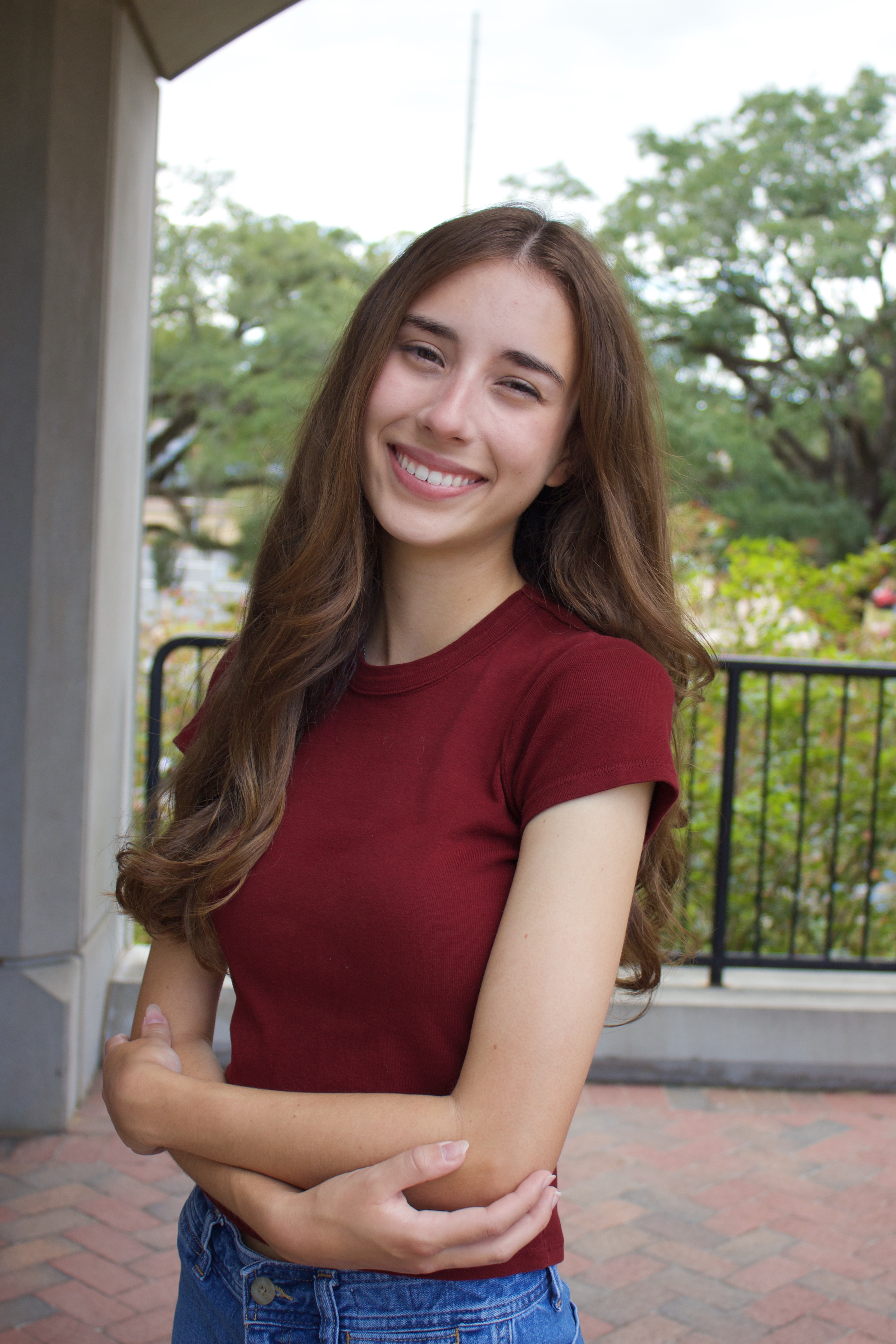
BIO
My name is Haylie Smith and I'm from Sarasota, Florida! I'm a sophomore majoring in Behavioral Neuroscience here at FSU. My current project focuses on the role of the conditional statement in logical reasoning. While at FSU, I plan to continue my research in psychology, aiming to better understand how people logically reason. My goal is to one day attend medical school and become a physician.
Do Conditionals Matter In Conditional Reasoning?
Authors: Haylie Smith, Dr. David W. BraithwaiteStudent Major: Behavioral Neuroscience
Mentor: Dr. David W. Braithwaite
Mentor's Department: Department of Psychology Mentor's College: College of Arts and Sciences Co-Presenters:
Abstract
The power of mathematics depends on its ability to express generalities. Generalities in math are often represented by conditional statements—for example, “If m and n are both positive, then m+n is positive.” However, it is not well understood whether, when, and how people use such statements during reasoning. We will investigate this by testing if participants’ evaluations of mathematical arguments are affected by the presence of general conditional statements within the arguments. Participants will evaluate arguments that either include a general conditional statement (e.g., “If m and n are both positive, then m+n is positive; m+n is not positive; therefore m and n are not both positive”) or do not (e.g., “m+n is not positive; therefore m and n are not both positive). Which arguments are presented with or without the conditional statement will be randomized between participants. If evaluations of the arguments do not change when the conditional statement is included, it will suggest that most people are unable to reason readily at the level of generalities. If evaluations are more accurate when the conditional statement is included, it will suggest that explicit generalities enhance participants’ perception of logical relations. Additionally, participants will do a brief mathematics test to determine whether the effects of presence versus absence of the conditional statement differ by mathematical ability.
Keywords: conditionals, conditional statements, logical reasoning, mathematics
25th annual Undergraduate Research Symposium, April 1, 2025
Jessica Weinberg Poster Session 4: 3:00 pm - 4:00 pm/ Poster #142
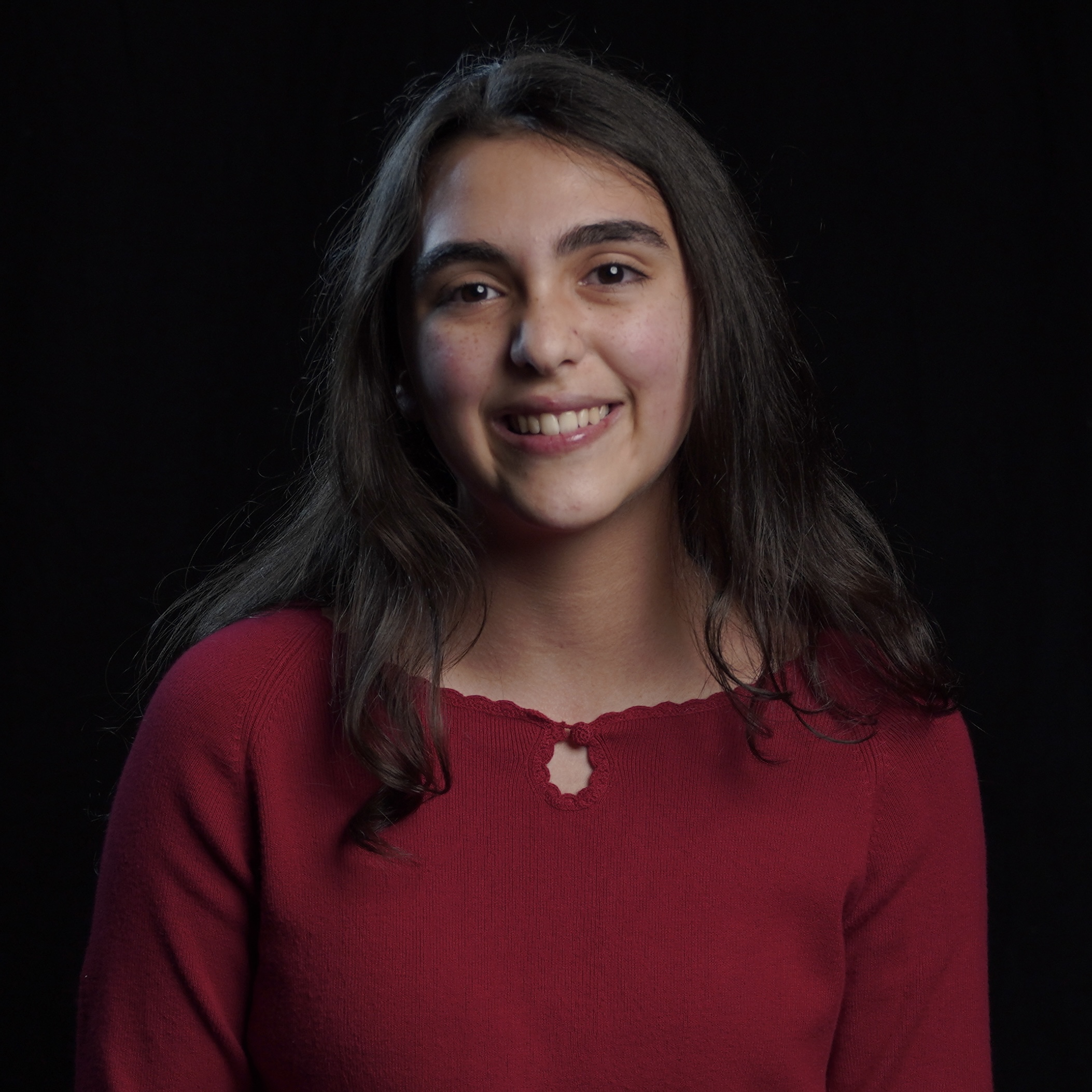
BIO
Jessica Weinberg is a second-year student from Delray Beach, Florida, pursuing a dual degree in Media/Communication Studies and Percussion Performance, accompanied by a minor in Psychology. She has been playing classical percussion since the third grade, and is interested in media psychology and media effects with a specific focus on music's impact on behavior and emotion. As a UROP student, Jessica joined Dr. Russell Clayton’s Cognition and Emotion Lab team this past fall. There, she studied how oral nicotine pouch users cognitively and emotionally respond to user-generated anti-oral nicotine pouch TikTok videos. She is excited to work in the Cognition and Emotion Lab throughout her time at FSU. After graduating in the Spring of 2027, Jessica plans on attending graduate school and looks forward to combining her passions for music and communications within her future career.
Investigating Psychophysiological and Self-Report Responses to Anti-Oral Nicotine Pouch Social Media Videos
Authors: Jessica Weinberg, Russell ClaytonStudent Major: Media/Communication Studies and Percussion Performance
Mentor: Russell Clayton
Mentor's Department: Communication Mentor's College: College of Communication & Information Co-Presenters: Catherine Pinkos and Isabelle Shim
Abstract
Objective: This study examines young adult oral nicotine pouch (ONP) users’ cognitive and emotional responses to user-generated anti-oral nicotine pouch (a-ONP) TikTok videos varying in the presence and absence of disgust images.
Methods: One hundred and two young adult ONP users were exposed to a TikTok simulation that contained user-generated a-ONP TikTok videos. Participants’ psychophysiological responses were recorded while participants viewed the TikTok simulations. Self-reported craving, behavioral intentions to use ONPs, perceived harm reduction, arousal, and negative emotional valence were measured at baseline and post TikTok simulation exposure.
Results: In support of the negativity bias hypothesis, the psychophysiological data indicated that the presence of disgust images led to increased negative emotion valence, arousal, and greater second-by-second attention to the a-ONP TikTok videos versus those absent in disgust images. Self-reported outcomes revealed a decrease in behavioral intentions to use ONPs for a-ONP TikTok videos present in disgust versus those absent in disgust. Craving, behavioral intentions to use ONPs, and perceived harm reduction of ONPs decreased after exposure to a-ONP TikTok videos present in disgust when compared to participants’ baseline reports.
Discussion: User-generated a-ONP TikTok videos that are present in disgust and are presented in a natural TikTok simulation led to effective message outcomes reflected by increased attention and self-reported outcomes. This study extends future opportunities to identify other potential message content used on social media to reduce ONP use and demonstrates the validity of viewing a-ONP TikTok videos in a natural media context.
Keywords: Psychophysiology, Cognitive and Emotional processing, Social Media, Oral Nicotine Pouches
25th annual Undergraduate Research Symposium, April 1, 2025
Henry Amador Poster Session 1: 9:30 am - 10:30 am / Poster #99

BIO
Henry Amador is a freshman at Florida State University majoring in Biological Sciences. Originally from Miami, Florida, he is involved in undergraduate research exploring lipid-based molecular recognition. During the summer, he conducts research at the University of Miami, investigating the genetic factors contributing to Alzheimer’s disease. His interests lie at the intersection of biochemistry and genetics, with a focus on understanding disease mechanisms at the molecular level. Beyond academics, Henry is actively engaged in service and mentorship through various organizations including Catholic Noles and Presidential Scholars. He aspires to pursue a career in pediatric medicine, combining his passion for research with clinical practice to improve patient outcomes.
Cationic Partitioning Indicator Displacement Assay
Authors: Henry Amador, Dr. Steven LenhertStudent Major: Biological Sciences (Pre-Med)
Mentor: Dr. Steven Lenhert
Mentor's Department: Department of Biological Science Mentor's College: University of Muenster Co-Presenters: Imanol Lopez
Abstract
Indicator Displacement Assays (IDAs) are a form of molecular detection used across multiple disciplines for their convenience and effectiveness. Cost efficient and easy to manipulate these sensors can detect small molecules such as pollutants and dyes. Recent research has resulted in the creation of an IDA using a two-phase system that results in the analyte partitioning into an organic oil droplet. To improve upon and alter the previous design, we chose to investigate the effects of droplets size on displacement rate, as well as its ability to detect cationic salts. A solution of oleic acid and methylene blue dye were printed on a slide and later flowed with varying salts. Absorbance data was collected using ImageJ to assess droplet selectivity through displacement/partitioning which determined copper and lead had a higher preference for oleic acid, displacing the blue dye. For the droplet size experiment, the same solution of oleic acid and methylene blue dye was utilized to print droplets of varying proportions onto a slide which was later flowed with an acidic solution. Droplet sizes were analyzed before and after the flow, and absorbance of data was collected similarly to the previous experiment. Analysis demonstrates smaller sized droplets improved the sensitivity of the droplet. Further sensor alteration could lead to specific detection of metallic ions based on droplet composition. If explored further, the implications for this system to be used as a replacement for current methods of water quality testing which remain expensive, insensitive, and not widely available.
Keywords: Biology, Molecular, Assay, Cationic
25th annual Undergraduate Research Symposium, April 1, 2025
Gavin Jordan Poster Session 2: 10:45 am - 11:45 am/ Poster #116

BIO
Gavin Jordan is a Freshman majoring in Finance on the pre-law track at FSU. Gavin grew up in Columbus, Ohio, where he studied the social sciences and took care of his four little sisters. He currently serves as a research assistant for Mr. Liam Wirsansky on his project with the Rosenstrasse foundation through the Undergraduate Research Opportunity Program (UROP) at FSU. Gavin’s other involvements include membership in the Sigma Chi fraternity and the presidential scholars program at FSU. He was drawn to the project due to his immense interest in history and politics, and hopes to continue making meaningful contributions to the project’s research.
Civil Courage in Nazi Germany
Authors: Gavin Jordan, Liam WirsanskyStudent Major: Finance and Political Science
Mentor: Liam Wirsansky
Mentor's Department: History Mentor's College: Florida State University Co-Presenters:
Abstract
As the Second World War progressed and Hitler’s ethnic cleansing of the Jewish people from Europe known as the Holocaust continued, the Gestapo began to round up Jews from mixed marriages. In 1943, the final roundup of Jews from Berlin occurred, including hundreds of Jewish men married to Aryan women into an assembly camp on the Rosenstrasse. On February 27, 1943, hundreds of women whose husbands were held captive flocked to the streets to protest the injustice. The Rosenstrasse Civil Courage Foundation aims to tell the stories of these brave women who engaged in one of the only open protests in Nazi Germany and their families. Throughout the course of the project, the Rosenstrasse Civil Courage Foundation provided its research assistants with information on who may have been involved with the protest. Its researchers would then insert their information into Ancestry to attempt to find matches. When matches were found, the team would continue to several other databases and document collections to piece together a full story. The stories of multiple families were retraced and uncovered whose bravery deserves to be forever enshrined by the Rosenstrasse foundation. Multiple biographies have been constructed to show how the civil courage of a few women was able to free hundreds of Jewish men in the face of one of history’s most brutal authoritarian dictators. These biographies will be utilized in curriculums to teach about the importance of civil courage, and the unique role that women play in history and resistance.
Keywords: History, Nazi, Identity
25th annual Undergraduate Research Symposium, April 1, 2025
Isabella Miller Poster Session 1: 9:30 am - 10:30 am/ Poster #115

BIO
Hello, my name is Isabella Miller. I'm from Saint Augustine, FL and am currently studying Nursing as a sophomore at FSU. I hope to one day get additional education and obtain my Doctorate of Nursing Practice (DNP) or Advanced Practice Registered Nurse (APRN) degree. I'm very interested in Pediatrics and Orthopedics, but I'm not entirely sure where I want to be focused yet. I currently work as a Patient Care Assistant in the Surgical Care Unit at Tallahassee Memorial Healthcare (TMH), and I love how much I've learned through this job. It's truly amazing the work doctors and nurses do, so I'm very excited for my future career. In my free time, I love to go to the beach, hangout with friends, stay active through things like running and pickleball, and traveling.
4 Minute, Asynchronous Mindfulness Intervention in the X-Ray Waiting Room: Results from a Randomized Clinical Trial
Authors: Isabella Miller, Adam HanleyStudent Major: Pre-Nursing
Mentor: Adam Hanley
Mentor's Department: Brain Science and Symptom Management Center Mentor's College: Nursing Co-Presenters:
Abstract
Mindfulness effectively improves a wide range of clinical outcomes. However, little is known about brief, single session mindfulness interventions. This study investigated whether a brief, single-session, asynchronous mindfulness intervention can reduce patients' pain intensity and pain unpleasantness in a waiting room setting. If effective, this intervention could significantly expand the access to mindfulness in clinical settings. In this randomized controlled trial, patients at an orthopedic walk-in clinic (n=159) were randomly allocated to either a 4-minute mindfulness audio recording or a 4-minute injury management control recording prior to treatment while they sat in the clinic waiting room. Participants completed single-item pain intensity and pain unpleasantness numeric rating scales (0-10), and then they listened to their respective audio recording. Immediately after the recording, they completed the pain intensity and pain unpleasantness items again. Results indicated the brief, audio-recorded mindfulness intervention decreased patients’ pain intensity and pain unpleasantness in the waiting room relative to the injury management control condition. Significantly more mindfulness participants experienced a clinically meaningful decrease in pain intensity (i.e., >15%): 35% vs. 20%, p=.044. Additionally, significantly more mindfulness participants expressed interest in further pain management resources: 54% vs. 38%, p=.032. Our findings suggest that a brief, audio-recorded mindfulness intervention can significantly decrease patients’ pain while they wait for treatment. This supports the idea that these brief mindfulness interventions can help reduce symptoms of patients in waiting rooms without burdening clinical staff. Future research is now needed to investigate whether these results generalize to other patient populations or clinical contexts.
Keywords: mindfulness, pain management, pain intensity, complementary medicine, single-session intervention
25th annual Undergraduate Research Symposium, April 1, 2025
Bailey Apgar Poster Session 4: 3:00 pm - 4:00 pm/ Poster #205

BIO
I am currently a sophomore on the pre medical track with aspirations to become a pediatric doctor. I am majoring in clinical professions and minoring in child development. I am from Atlanta, Georgia where I have worked in preschools, daycares, summer camps, and elementary schools for several years. Working with children is something I am passionate about, and something I wish to continue doing in the future. At Florida State, I am currently Vice President of Operations for Alpha Delta Pi, member of the FSU Honors Program, member of Remote Area Medical at FSU, member of Who We Play For at FSU, and an employee for FSU Rec. I am a dedicated and driven individual who values commitment and responsibility, while learning how to grow in each endeavor, role, and challenge that I face.
Examining the Effects of Children’s Word Specific Phonological Awareness on Word Reading Accuracy Within a Lexical Quality Theoretical Framework
Authors: Bailey Apgar, Dr. Nancy C. MarencinStudent Major: Interdisciplinary Medical Sciences: Clinical Professions
Mentor: Dr. Nancy C. Marencin
Mentor's Department: Florida Center for Reading Research & Psychology Mentor's College: College of Arts and Sciences Co-Presenters: Maya Leshnov, Jalliyia Phillippy, Ruhee Patel, Ziraili Contreras
Abstract
Purpose
Although the significant relation between phonological awareness (PA) and word reading is well
documented, questions remain about the nature of this relationship over time. This is
important given that the development of lexical representations is item-based and depends on the
unique interaction between the skills a child brings to the task and item/word characteristics. This study
integrates a word specific measure of PA to further clarify the relationship between the quality of an
individual’s phonological representations and word reading accuracy.
Method
Second-grade (n=80) and first-grade students (data collection in progress) attending Title-I schools in the
southeast United States completed the Phonological Awareness Screening Test (PAST; Kilpatrick, 2021)
and read the same 52 words. Children also completed other child-level, word-level and child-by-word
level measures of reading and reading related skills.
Results
Preliminary results from logistic cross classified random-effects models using our sample of second-
grade students indicated significant child-level (decoding and vocabulary) and word-level (spelling-to-
pronunciation transparency rating, frequency, and phoneme length) predictors of word reading
accuracy. At the child-by-word level, a child’s word specific PA, letter-sound knowledge, and familiarity
were not significant predictors.
Conclusions
Initial results suggest these second-grade students have sufficiently redundant orthographic,
phonological, and semantic representations of the words in our study. Redundancy can facilitate word
recognition in the absence of complete and precise word knowledge (Adlof et al., 2016). The lack of
significant child-by-word effects in our models may represent important role redundancy played in word reading accuracy and the consequences of lexical quality (Perfetti, 2007).
Keywords: Phonological Awareness, reading
25th annual Undergraduate Research Symposium, April 1, 2025
David Frazier Poster Session 2: 10:45 am - 11:45 am/ Poster #67
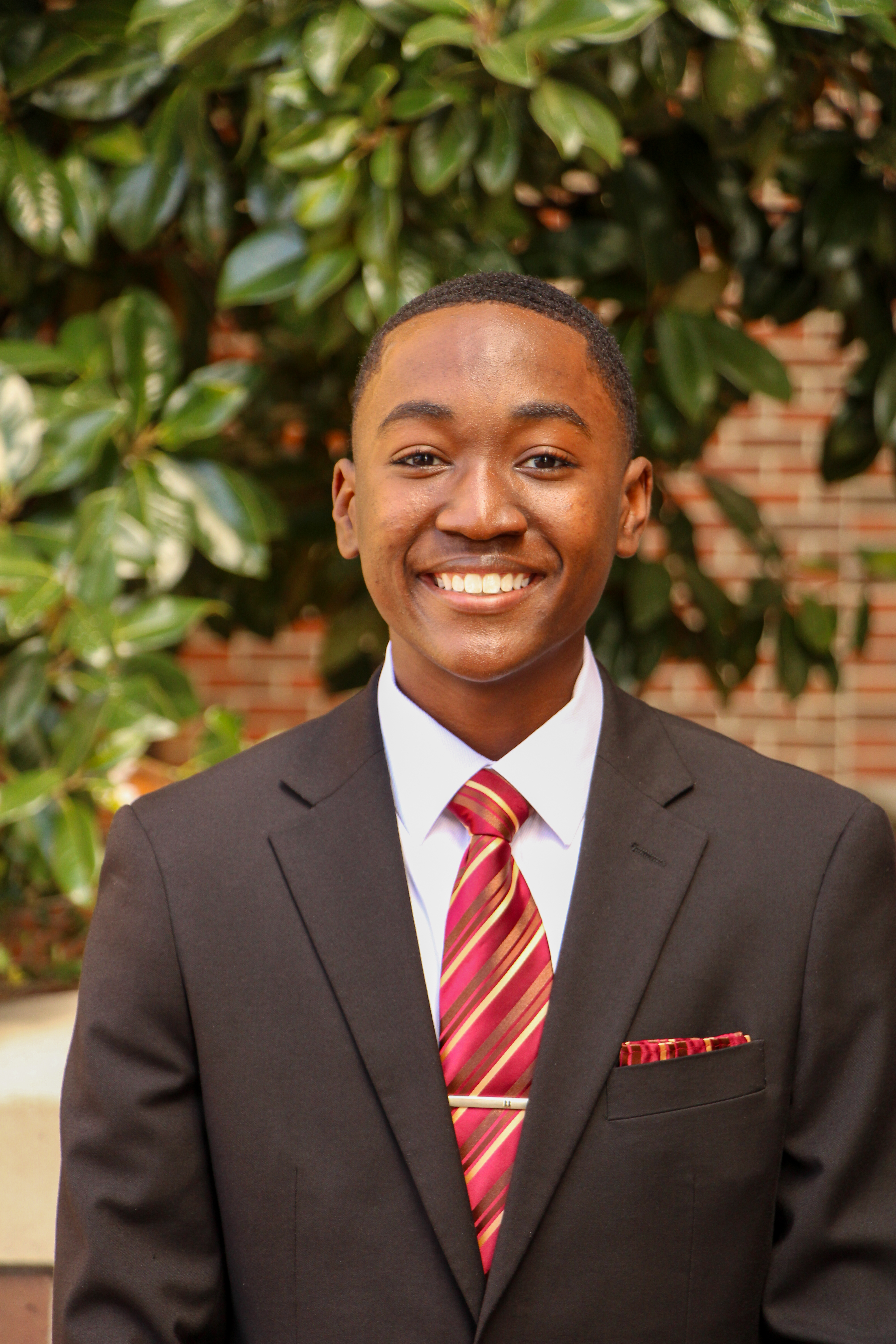
BIO
Hometown: Apollo Beach, FL
Career Goals: After completing law school, David Frazier aims to serve as a Judge Advocate General in the Navy. Following his military service, he aspires to become a judge, ultimately working toward his long-term ambition of serving as a Justice on the United States Supreme Court.
Research Interests: David is passionate about legal research, particularly in exploring complex legal questions and driving meaningful change through his work. His current undergraduate research project, titled Examining Hope as a Moderator Between Racial Microaggressions and Anxiety, investigates the role of hope as a moderator in mitigating the psychological impact of racial microaggressions on anxiety. This project combines his interests in social justice and mental health, and he aims to apply the insights gained to his future legal career, where he hopes to address systemic issues and promote equity through legal reforms.
Examining Hope as a Moderator Between Racial Microaggressions and Anxiety
Authors: David Frazier, Nicholas ReeseStudent Major: Political Science
Mentor: Nicholas Reese
Mentor's Department: Counseling Psychology and School Psychology Mentor's College: Anne Spencer Daves College of Education, Health, and Human Sciences Co-Presenters: NG Lobe Njok, Schleiden Saint-Jean
Abstract
This study examines the relationship between racial microaggressions and anxiety levels among Black students attending Predominantly White Institutions (PWIs), with hope investigated as a potential moderating factor. The research addresses critical gaps in anxiety research for Black populations, particularly given the increasing prevalence of anxiety disorders and the unique stressors faced by Black college students. Using Racial Battle Fatigue theory and Snyder's Hope Theory as theoretical frameworks, the study employs a correlational cross-sectional design to investigate two primary research questions: (1) whether the frequency of racial microaggressions is associated with anxiety levels in Black college emerging adult students at PWIs, and (2) if hope moderates the relationship between racial microaggressions and anxiety levels. The study controls for ethnicity and first-generation status, as these variables have been shown to interconnect with both racial microaggressions and anxiety in Black populations. This research aims to contribute to the development of culturally tailored interventions and expand the empirical understanding of anxiety in Black college students, addressing a significant gap in mental health literature and practice. The findings have important implications for Health Service Psychology practitioners working with Black college students and could inform more effective, culturally-sensitive treatment approaches.
Keywords: Microaggressions, Anxiety, Psychology, Racial
25th annual Undergraduate Research Symposium, April 1, 2025
Kiara Felix Poster Session 3: 1:45 pm - 2:45 pm / Poster #242

BIO
My name is Kiara Catherine Felix, and I am a first-year student at Florida State University, double majoring in media communications studies and criminology. I am from West Palm Beach Florida. My research interests lie at the intersection of media, law, and criminal justice. I am excited to engage with others at the symposium and share my research.
Gendered Depictions of Household Care Responsibilities in Advertisements: A Quantitative Content Analysis
Authors: Kiara Felix, Alessandra Noli PeschieraStudent Major: Communications, Crimionolgy
Mentor: Alessandra Noli Peschiera
Mentor's Department: Center for Hispanic Marketing Communication Mentor's College: College of Communication & Information Co-Presenters: Ava Griner and Payton Vazquez
Abstract
Social learning theory and social cognitive theory both state that human behavior is greatly impacted by the representation of behaviors around them. The purpose of this study is to determine the representation of and expectations for behavior of demographic groups such as gender and race in household cleaning product advertisements. Quantitative content analyses are commonly used to determine the general distribution of characteristics across a set of media. Here, demographic based role assignment bias in cleaning product advertisements was measured using such an analysis. A reliable test was first built by a group of three coders through four rounds of practice coding and one round of reliability coding. Then, the advertisements to be featured in the final data analysis were coded and subsequently assessed to determine broader patterns. Bias in these advertisements has the potential to shape viewer’s expectations of individuals that fall into those demographics, thus pushing certain people into homemaker roles. There is a history in the United States of expecting women to be homemakers, and household product advertisements of the recent past consistently placed women characters into homemaker roles. It is necessary, then, to determine whether this pattern still exists, or if modern social justice movements have encouraged advertisement companies to produce a more diverse cast of characters, thus diversifying thought among viewers. Once the distribution of cleaning product advertisements is determined, it would be reasonable to pursue other forms of media, such as television and movies to truly understand the media atmosphere shaping American minds.
Keywords: gender, advertisements, quantitative content analysis
25th annual Undergraduate Research Symposium, April 1, 2025
Paulos Samuel Poster Session 4: 3:00 pm - 4:00 pm/ Poster #217
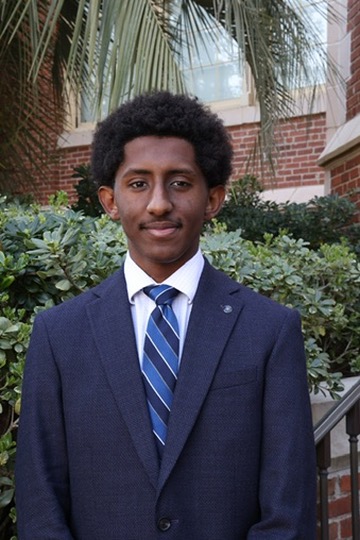
BIO
I'm Paulos, originally from Orlando, and have a strong passion for science, medicine, and global health. I’m currently involved in research on fatty liver disease, studying how a certain protein, YBX1, can affect gene expression and play a role in obese patients. It’s been exciting to explore how molecular mechanisms can shape health outcomes and potential treatments.
Outside of academics, I’m part of the Phi Delta Epsilon medical fraternity, and stay active on campus through the African Student Association and my Intramural basketball team. I’m also an Eagle Scout, and have a love for the outdoors—hiking and exploring nature is still one of my favorite ways to recharge.
In the future, I plan to become a physician and hope to combine clinical work with research and service. I’m still deciding between ophthalmology and gastroenterology, but I know I want to contribute meaningfully to healthcare, both in private practice and in underserved communities around the world. My goal is to help bridge gaps in access and bring innovation and compassion to every part of my medical journey.
Post-transcriptional regulation of hepatic lipid metabolism by Y-box binding protein 1
Authors: Paulos Samuel, Dr. James JordanStudent Major: Cell & Molecular Neuroscience
Mentor: Dr. James Jordan
Mentor's Department: Biological Science Mentor's College: Florida State University Co-Presenters:
Abstract
Metabolic dysfunction‐associated steatotic liver disease (MASLD) is a growing global health challenge characterized by excessive hepatic lipid accumulation in the setting of obesity and insulin resistance. Current therapies remain limited, underscoring the need to identify molecular drivers of disease progression. Y‐box binding protein-1 (Ybx1) is a single‐stranded nucleic acid binding protein implicated in MASLD in diet‐induced obesity (Jordan et al., bioRxiv, 2024), yet its role in hepatic lipid metabolism remains unclear. We performed an integrated multi‐omic analysis and identified ten genes bound by Ybx1 that displayed altered mRNA and protein expression. We hypothesized that these genes contribute to lipid accumulation in hepatocytes. To test this, we knocked down eight of these genes in hepatocyte‐like Huh7 cells using siRNA. Cells were then exposed to 0.25 mM oleic and palmitic acid for 16 hours to mimic a high‐fat diet, stained with Oil Red O, and analyzed using ImageJ. Lipid content was quantified by extracting Oil Red O from intracellular droplets and measuring absorbance at 492 nm. Preliminary results indicate that among seven genes with transcripts stabilized by Ybx1, siRNA against three—Carnitine O-Acetyltransferase (CRAT), Vanin 1 (Vnn1), and Abhydrolase domain containing 2 (Abhd2)—reduced lipid accumulation. In contrast, knockdown of Carboxylesterase 3 (Ces3), a gene negatively regulated by Ybx1, increased lipid storage. These findings reveal a dual regulatory role for Ybx1 in hepatic lipid metabolism and identify potential targets for MASLD therapy. Future work will validate these targets using overexpression, confirm Ybx1:mRNA interactions by ChIP‐qPCR, and test Ybx1’s role in mRNA stability with RT-qPCR.
Keywords: MASLD, Liver, Obesity, Epigenetics, RNA
25th annual Undergraduate Research Symposium, April 1, 2025
Maya Gleicher Poster Session 2: 10:45 am - 11:45 am/ Poster #192

BIO
My name is Maya Gleicher, and I am a first-year majoring in Biological Sciences. This project focuses on how social media algorithms affect human behavior, which led to an interest in the intersection of technology and health. This research has inspired me to explore how biology and technology can work together to improve health and well-being. Outside academics, I am involved in the Women in Math, Science, and Engineering (WIMSE) LLC, American Medical Women's Association (AMWA), and Seminole Scuba Club. I plan to pursue a career in dermatology and make a positive impact on patient care
Algorithmic Imaginaries
Authors: Maya Gleicher, Dr. Vanessa DennenStudent Major: Biological Sciences
Mentor: Dr. Vanessa Dennen
Mentor's Department: Department of Educational Psychology & Learning Systems Mentor's College: College of Education, Health and Human Sciences Co-Presenters: Sophia Furer
Abstract
Social media algorithms shape user interactions with content, influencing engagement and behavior. This study investigates individuals' perceptions of these algorithms and their impacts on digital experiences. Given the dominance of social media in how people access information and form opinions, understanding these dynamics is crucial. This research employs a systematic literature review to identify key themes in users’ awareness and behaviors regarding algorithmic influence, such as concerns about bias and perceived control. Preliminary findings suggest a gap between users’ perceptions of algorithms and their actual behavioral impact. Users show differing levels of awareness, with some experiencing emotional reactions like surprise or anger when they realize algorithms affect their behavior, leading to changes in engagement strategies. Users attempt to manipulate algorithms by altering their scrolling habits or engagement metrics. The review highlights that qualitative approaches such as interviews and thematic analysis are valuable for understanding users' attitudes toward algorithms. The study emphasizes the importance of digital literacy, particularly for undergraduate students, to help them navigate social media platforms more critically. Given the varying levels of algorithmic understanding, the findings suggest the need for media literacy education on algorithmic presence and function, empowering them to make informed decisions in their digital environments. Future survey-based research will explore how students experience social media algorithms and their perceptions of digital engagement.
Keywords: algorithms, social media, imaginaries
25th annual Undergraduate Research Symposium, April 1, 2025
Ciera Merritt Poster Session 3: 1:45 pm - 2:45 pm/ Poster #72
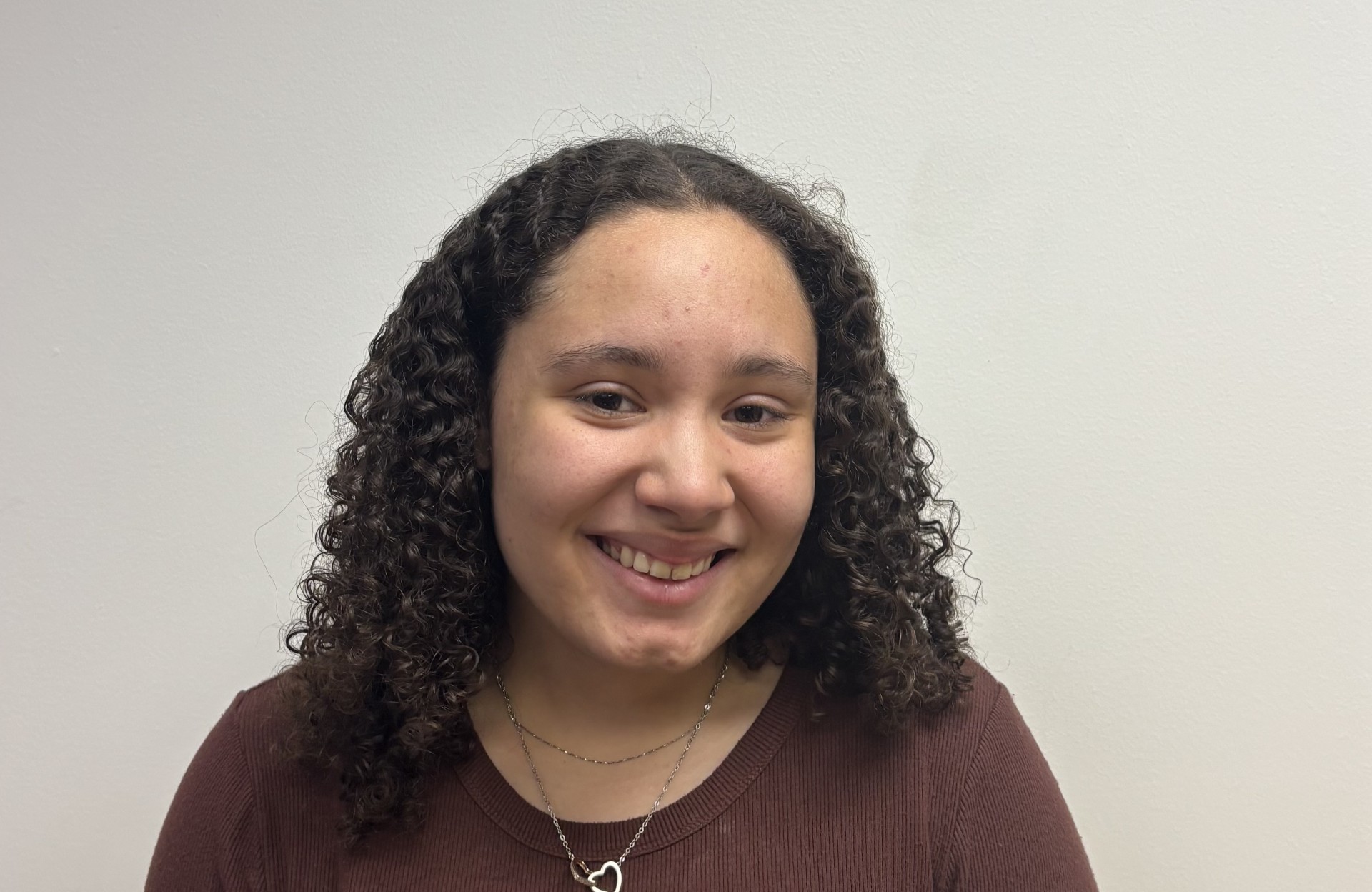
BIO
My name is Ciera Merritt and I am from Jacksonville, Florida. I am a first-year Environmental Science Major here at FSU. I am particularly interested in endangered animals and hope to eventually work for the government to help more species become federally protected. My current in the Department of Institutional Research has allowed me to explore another one of my interests in the world of public administration, to compliment my love for the environment.
Are We the Champions? Determining How to Measure Effectiveness in Institutional Research
Authors: Ciera Merritt, Katie GipaloStudent Major: Environmental Science
Mentor: Katie Gipalo
Mentor's Department: Insitutional Research Mentor's College: Floridia State University Co-Presenters: Cheyenne Croft
Abstract
The Primary purpose of Institutional research is to analyze and collect data under certain focuses such as student admissions, and financial aid. In reviewing the data and statistics, the department is able to make executive decisions that affect the overall progression of the institution. In this study, various sources were accumulated as a way to get a better understanding of performance measurement as well as performance management. Answers were then pulled, answering the question of the most effective methods to measure performance. This was then followed by focus groups of five different units in the office. Based on their responses, recommendations were then pulled in effort to build a more efficient Institutional Research office. Measuring performance is important because it allows a department to see where it needs to improve as well as a means to measure success in an office. This project uses a literature review, as well as department feedback from conducted focus groups, to find out where our Institutional research office here at FSU needs to improve.
Keywords: Performance, Measurement, Effectiveness
25th annual Undergraduate Research Symposium, April 1, 2025
Phoenix Ricketts Poster Session 2: 10:45 am - 11:45 am/ Poster #238
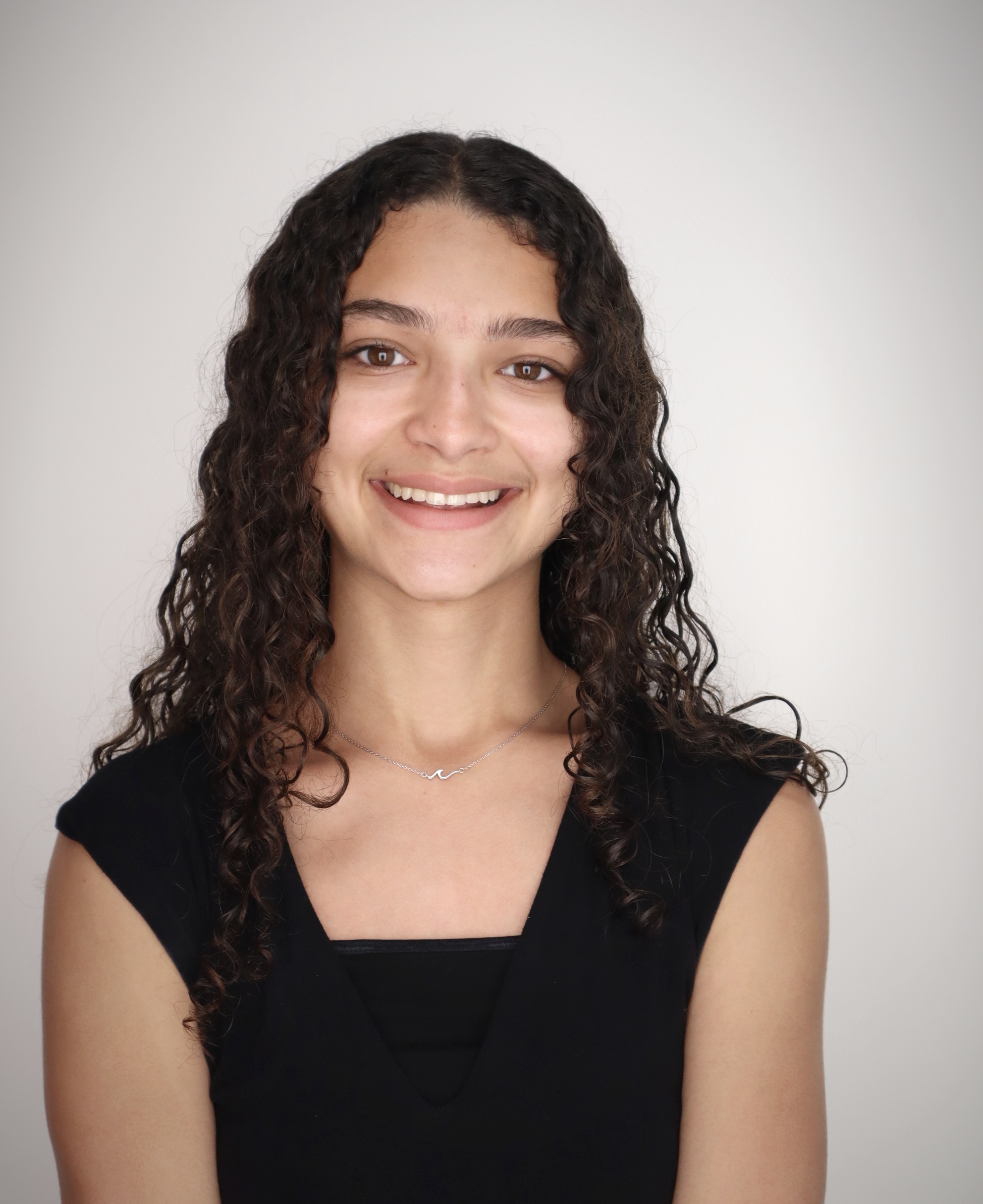
BIO
My name is Phoenix Ricketts. I am majoring in Criminology and Interdisciplinary Social Science with a Public Policy Specialization. I hope to continue to engage in research relating to courts, corrections, and criminal justice procedures. This research experience sparked my interest in criminal justice policy, and I plan to further my education in preparation for a career in research and advocacy, working in local government or non-profit organizations.
Misdemeanor (In)Justice
Authors: Phoenix Ricketts, Dr. Jennifer CoppStudent Major: Criminology and Interdisciplinary Social Science
Mentor: Dr. Jennifer Copp
Mentor's Department: Criminology Mentor's College: College of Criminology and Criminal Justice Co-Presenters: Emily Fleurinor, Rachel Douglas, Victoria Baran, Hannah Gibb, Alexa Athanassie
Abstract
It is estimated that over 13 million misdemeanor cases are filed in the United States each year. Recent research has highlighted some of the concerns related to the misdemeanor system of justice in the United States, including violations of due process and practices that contribute to inequities. The current research intends to explore the misdemeanor system in Florida's Second Judicial Circuit to understand the extent to which misdemeanor courtrooms are complying with the law and to understand some of the factors associated with non-compliance and other potential sources of unfairness. To accomplish this, a team of undergraduate student researchers conducted systematic courtroom observations using a custom form across the circuit, comprised of six separate courtrooms. Observations included misdemeanor court arraignments and criminal traffic proceedings. Courtroom observations were completed in both rural and urban settings. Drawing on the data elicited during courtroom observations, future analyses will systematically explore local courtroom practices to capture the extent of legal compliance and to identify factors associated with non-compliance in legal proceedings. Our findings will be shared with local stakeholders to inform discussions of the misdemeanor system of justice, including ways to promote best practices.
Keywords: Criminal justice; courts; due process; mixed-methods research
25th annual Undergraduate Research Symposium, April 1, 2025
Jose Collantes Poster Session 1: 9:30 am - 10:30 am/ Poster #131
BIO
My name is Jose Collantes and I am a sophomore studying Political Science and English Literature with aspirations of going to law school. Under the guidance of Dr. Gunter and Idy Codington, I was able to find the intersection of these two fields of studies which focus on how various emotional traits are used by people to navigate through difficult family politics. John Moultrie Jr.'s sympathetic actions towards his politically unlike brothers has connected to my own experience with accepting my family's political differences as I learn to balance my own family values with political ones. Through my research, I have developed a newfound appreciation for history because of its surprisingly relevant past which even applies to difficult political matters in families of the present-day.
A Lover, A Loyalist, A Longing Brother: Letters from John Moultrie Jr. 1761-1780
Authors: Jose Collantes, Dr. Benjamin GunterStudent Major: Political Science & English Literature
Mentor: Dr. Benjamin Gunter
Mentor's Department: Department of Dance, Fine Arts Mentor's College: College of Fine Arts Co-Presenters:
Abstract
Oftentimes, we cannot choose our family, but we can choose the person we want to be. In 1780, British East Florida's Lieutenant Governor John Moultrie Jr. was faced with a difficult dilemma in mourning the death of his younger brother. He could not recognize the sacrifice his younger brother, Thomas Moultrie, made to defend the newly formed United States of America at the Siege of Charleston. John Moultrie Jr. had been part of British East Florida's government since 1763 and Interim Governor of the Colony from 1771-1774, performing his duties with fairness and honor. Conceding to America's political aims was unthinkable, yet John still after 5 years of silence mustered up the voice to reconnect with his brothers on the other side of the aisle. My goal was to highlight the aspects of John's character that contributed to his need to write his other Patriot brother, Alexander Moultrie, to mourn over a shared love. Through inspecting primary letters that described his actions as Interim Governor and secondary sources that transcribed letters about John's love in the Cherokee War, aspects of John's character were found and could explain why he was willing to write his 1780 condolence letter despite his political disagreements. John constitutes a familiar contemporary account about the contradictory feelings that arise within a politically divided family and how personal values can address and begin those difficult conversations with family.
Keywords: East Florida, Loyalist, Family, Political Divide
25th annual Undergraduate Research Symposium, April 1, 2025
Tamia Siplin Poster Session 3: 1:45 pm - 2:45 pm/ Poster #239
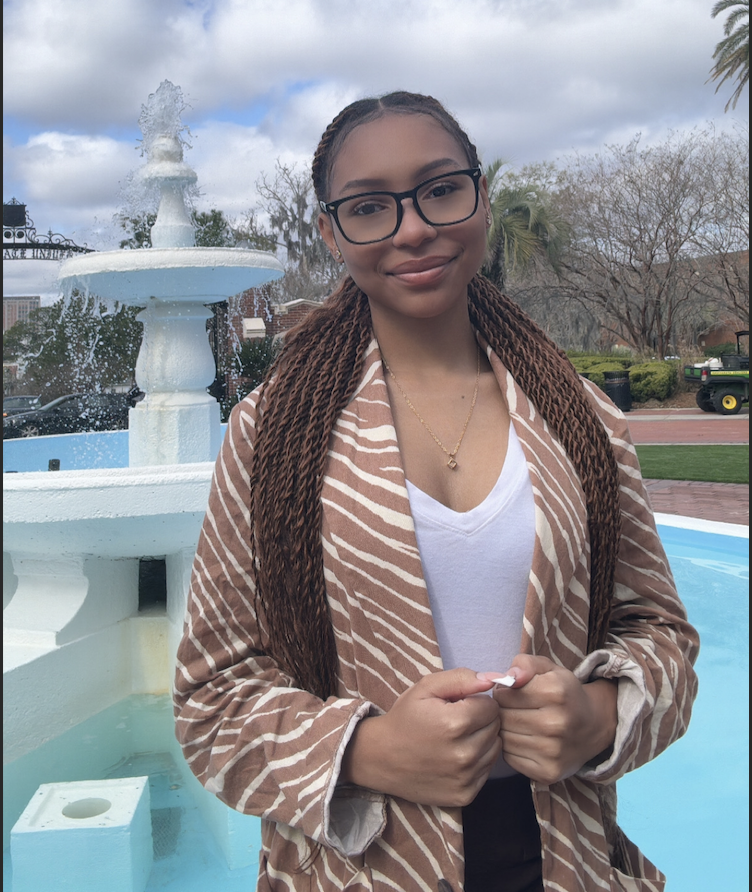
BIO
My name is Tamia Siplin, and I am a sophomore majoring in Biological Sciences on a pre-med track. I’m originally from Parkland, Florida, and I aspire to become a trauma surgeon, driven by my passion for medicine and patient care. My research interests include HIV-related partner communication. Beyond academics, I am actively involved in several organizations, including the Student Government Association's Union Board and USSTRIDE. As a U-STAR mentor within USSTRIDE, I provide academic support and mentorship to other students. Additionally, I have volunteered in the Post-Op Care Unit and Bixler Emergency Center at TMH, reinforcing my dedication to community service. With a strong commitment to leadership and academic excellence, I continue to seek opportunities that will prepare me for a future in surgery and medical research.
Factors Influencing HIV-Related Partner Communication Among Adolescent Girls and Young Women in a Cash Transfer Program in South Africa
Authors: Tamia Siplin, Dr.Brittany LaneStudent Major: Biological Sciences
Mentor: Dr.Brittany Lane
Mentor's Department: Center of Population Sciences for Health Empowerment Mentor's College: Florida State University Co-Presenters: Merrill Sonne
Abstract
This research examines the sociocultural factors that impact HIV-related partner communication among adolescent girls and young women (AGYW) aged 15-24 in South Africa while focusing on cash transfer programs and education in improving HIV-related partner communication. Specifically, this study addresses how these determinants influence discussion regarding HIV testing, prevention, and treatment among different partner types (intergenerational, transactional, and committed relationships). Understanding the roles of these factors is paramount to identifying barriers and facilitators of open communication between sexual partners. Assessments of peer-reviewed and grey literature published or reported within the past ten years were conducted using key search terms such as “HIV partner communication,” “AGYW,” and others. PUBMED, Google Scholar and FSU libraries were used to analyze studies examining HIV communication, conditional cash transfer interventions (CCT), dyadic interventions, and the influence of individual, interpersonal, and community-level factors on HIV-related AGYW behavior. The findings suggest that lower education level, parental status, the presence of rigid gender norms (e.g., male dominance in decision-making), and HIV-related stigma play a significant role in AGYW’s communication about HIV with their partners.
Cash transfer programs appear to facilitate increased communication by improving AGYW’s education attendance and economic independence. These findings highlight the need for targeted interventions that address sociocultural factors by challenging harmful gender norms, reducing stigma, and promoting educational and economic opportunities while emphasizing the importance of AGYW’s communication as a key HIV risk-reduction strategy. Furthermore, these findings suggest the need to promote education and economic opportunities among AGYW to improve HIV-related partner communication.
Keywords: HIV, South Africa, Girls
25th annual Undergraduate Research Symposium, April 1, 2025
Nashrah Pierre-Louis Poster Session 2: 10:45 am - 11:45 am/ Poster #245

BIO
Greetings! I am a third-year student from Plantation, Florida, pursuing a B.S. in psychology with a minor in sociology. My research interests include children's emotional development, education, and behavioral interventions. This interest stems from my work with children in school settings as a summer camp and aftercare counselor. I am passionate about helping children overcome emotional challenges to improve their functioning and outcomes in every aspect of life. In the future, I plan to attend graduate school to become a school psychologist or pediatric occupational therapist.
The Emotional Valence of the Words in Picture Books Read in Preschool Settings
Authors: Nashrah Pierre-Louis, Rebecca VasileStudent Major: Psychology
Mentor: Rebecca Vasile
Mentor's Department: School of Teacher Education Mentor's College: Anne Spencer Daves College of Education, Health, and Human Sciences Co-Presenters: Kaley Tran
Abstract
Research shows that the language in books for young children differs from everyday speech that children hear (Dawson et al., 2021; Montag et al., 2015). Specifically, books and everyday speech differ in their variety of vocabulary, with books having greater breadth (Dawson et al., 2021; Montag et al., 2021). Exposure to complex vocabulary is crucial for children’s overall language development and their ability to express their thoughts and emotions (Streubel et al., 2020). One kind of vocabulary that young children can be exposed to through books is emotion vocabulary. Currently, there is little evidence about the emotional valence of the words in children’s books. Emotional valence refers to the degree of pleasantness or unpleasantness of an affective state, ranging from positive to negative (Arfe et al., 2022; Russell, 1980). Given the ubiquity and diversity of books in early childhood education classrooms, it is worthwhile to examine what emotional valence looks like across books in this setting. We utilized the English Lexicon Project (ELP) database to analyze emotional valence ratings for words included in a corpus of books (n = 104). The ELP is a standardized behavioral database of over 40,000 word ratings across 444 adult participants. These books come from observations of shared book reading interactions in early childhood education centers from 2015-2018. Our findings show that children's picture books contain more pleasant emotional words.
Keywords: Child development, Literacy, Preschool, and EmotionNa


